Article Outline
4. Analytical models and design adjusting for light transport systems
5. Development of market products
Figures and tables
Volume 6 Issue 2 > pp. 60-79 • doi: 10.15627/jd.2019.8
Daylight Transport Systems for Buildings at High Latitudes
Biljana Obradovic,* Barbara Szybinska Matusiak
Author affiliations
Department of Architecture and Technology, Norwegian University of Science and Technology (NTNU), Trondheim, Norway
* Corresponding author.
Biljana.obradovic@norconsult.com (B. Obradovic)
barbara.matusiak@ntnu.no (B. S. Matusiak)
History: Received 16 July 2019 | Revised 10 September 2019 | Accepted 14 September 2019 | Published online 29 September 2019
Copyright: © 2019 The Author(s). Published by solarlits.com. This is an open access article under the CC BY license (http://creativecommons.org/licenses/by/4.0/).
Citation: Biljana Obradovic, Barbara Szybinska Matusiak, Daylight Transport Systems for Buildings at High Latitudes, Journal of Daylighting 6 (2019) 60-79 http://dx.doi.org/10.15627/jd.2019.8
Figures and tables
Abstract
This paper is a literature study of daylight transport systems aiming at selecting the most appropriate ones for application at high latitudes. It is limited to the systems that transport light at a long distance from the façade and distribute it either in the building core or at a rear place in a room adjacent to the façade. The literature is spanning from the 80s’ to the present. It covers the theoretical background and development of the systems from their infancy, through technical development of the design elements and to the adaptation of the systems to different climatic conditions. Since the most literature comes from equatorial and tropical climate, a short contextualization with high latitudes climate is included. Findings are systematized and presented in tables for easier comparison of efficiency, visual comfort, design efficacy, maintenance need, cost and/or availability on the market, and energy-saving potential in different climates. Conclusions confirm that the daylight condition at the location is the main prerequisite when deciding on the type of collector while the building structure and room functionality are the basis for choosing the type of the transport element. Finally, the distribution element showed to be the key factor when discussing applicability in a functional space where the final success depends on human acceptance. This paper can be useful to get an overview of performance characteristics and application preferences of different daylight transport systems or just their components in daylight conditions at high latitudes.
Keywords
Daylight transport systems, Tubular hollow mirror sun pipes, Light pipes, Fiber optical systems
1. Introduction
The demands for energy saving in newly constructed buildings, set by authorities, are systematically increasing. Nowadays there is a passive-house level for all the new buildings, but there have been many political signs about the demands for Zero-energy buildings (ZEB) starting from the year 2020, for residential and commercial buildings. This means that the building (or its site) must provide itself with energy.
Lighting can use just electrical energy while all the other technical systems can use some of the alternative sources that could be renewable or energy-efficient. Electrical energy demands for lighting in buildings could be solved with PV panels usually placed on the roof of the building. However, according to the Norwegian research project “Klima 2050”, higher precipitation is expected in Scandinavia soon, because of climate changes. This implicates recommendations for the design of ''green roofs''. Green roofs help damper floodwater in cities and help reduce the load on the sewage system, thus allowing the design of lower capacity. This further means that it will no longer be possible for solar panels to be placed on roofs in the quantity that could solve all energy requirements. Moreover, it is also widely considered that PV panels are a ‘’renewable source of power to lighting, but this is wrong as they are just a convertor of the energy with extremely high CO2 footprint [1]. That is why it is important to focus attention on finding a renewable alternative for lighting, for example by providing possibilities to the increased use of daylight. More daylight provided indoors could reduce energy demands for lighting.
High latitude locations are characterized by low sun angles, and the necessity for sun-shading devices for visual and thermal comfort is strong [2-4]. Several studies addressing visual comfort in office buildings at high latitudes show the need for special attention when designing sun-shading devices, not only for low solar angles to balance daylighting and thermal load, but also for the unyielding need of users for manual control of sun-shading devices [5-8]. The practice and research have shown that user-controlled sun-shading devices are often the cause of radical reduction of daylight availability during the day, where daylight contribution through the window is, then, very much dependent on the weather conditions and a single-user personal judgment [9,10]. Daylight transport systems give the possibility to deliver daylight into the room independently on solar radiation control and could make daylight presence indoors more reliable. Any contribution to the daylighting in the deeper space is advantageous. In building cores and rooms without windows as low as 50 lux is a satisfactory level that makes significance for a feeling of daylight presence [11]. Prolonged daylight availability indoor could decrease energy demands for artificial lighting and increase the benefits to the human circadian system.
The primary goal of this literature review was to select daylighting systems suitable for buildings at high latitudes. In the context of this study, it means latitudes higher than 55 degrees. This is important since e.g. the office buildings use almost 40% of energy for lighting, other building types, as commercial or industry even more. The diurnal function for office buildings (9h-17h) corresponds very well with daylight hours. For winter months (the case of Oslo 59N) daylighting hours are from 09 h to 15 h, while for summer months, the daylighting hours are from 04 h to 23 h. This gives notice on systems’ applicability for many other functions (e.g. industry, healthcare, sports and recreational buildings, and educational and cultural facilities). The last chapter brings a discussion about the results of the literature review and conclusions about applicability for high latitudes.
There are many benefits of using advanced daylighting systems. “It increases usable daylight for climates with predominantly overcast skies, increases usable daylight for very sunny climates where control of direct sun is required, increases usable daylight for windows that are blocked by exterior obstructions and therefore have a restricted view of the sky, and Transport usable daylight to windowless spaces” [12]. Specifically, deep plan offices, corridors, staircases and other core rooms that require lighting during the day can, without a doubt, benefit from advanced daylighting systems. The potential of many of the daylight transport systems was scientifically proven, and they are mentioned in the overview of the daylighting technologies reviewed in the IEA task 21 [12,13].
2. Sun and sky conditions
Literature review reveals that the majority of studies were done in tropical and European maritime climate. The climate in tropical countries is characterized by high sunshine, high humidity, and very frequent cloudiness and rainfall. The exterior illuminance can rapidly decrease from 100000 lux to 20000 lux. High humidity brings light scattering in the atmosphere so even the clear sky has a considerable amount of diffuse light, about 20%. The average yearly sun hours are 2350, which is 55% of the maximum (4476 hours), according to Weather-and Climate site. Nevertheless, the percentage of sunny skies just passed 50%, the research on daylight transport systems in tropical areas mostly dealt with clear and sunny skies, while the studies in the European maritime region solely addressed the overcast sky. The conclusions given in the papers about the potential of application for different components in the high latitude regions, based on the research, are too general and more detailed ones need to be drawn based on realistic daylight conditions for almost every region.
Interestingly, in the rather low populated Northern Europe, three capitals (Oslo, Stockholm, and Helsinki) and other large towns (Bergen, Orebro) are located close to 60° N; giving motivation to study the potential for daylight harvesting at high latitudes, at least higher than 55°N (Copenhagen). The climate of the south part of Norway (58° – 62°) is classified as a humid continental climate. There are 1632 hours of sunlight per year (37.2% of day hours), which means on average 4:28h of sunlight per day. The remaining 62.8% of daylight hours are likely cloudy or with shade, haze or low sun intensity, according to the Norwegian Meteorological Institute. At midday, the sun is on average 30.5° above the horizon at Oslo (the lowest 7° in December and the highest 53° in June).
According to Satel Light data and Geophysical Institute, University of Bergen, Norway, predominantly overcast sky type, in the targeted area of 60° N, corresponds to the sky standard type I.1, while clear sunny sky conditions correspond to the sky standard V.4 [14]. When solar altitude is 10° for bright overcast sky (type I.1.), the exterior diffuse horizontal illuminance is 4650 lux, while for solar altitude 50° is 20500 lux, calculated from Dv=133,8×Dv/Ev sinα, Fig. 1 [14]. This result indicates the possible expected illuminance intensity and it helps to choose the right collector type and its design properties. When the solar altitude is 10° for clear sunny sky with very clear corona (type V.4; Tv 2,5), parallel normal illuminance Pv is 9468 lux, while for the solar altitude 30° it is 42000 lux, calculated from the Pv=133.8 (e^(-avmTv)) sinα, Fig. 2 [14].
Figure 1
Fig. 1. Sky model I.1. Overcast sky with steep gradation and azimuthal uniformity, (a) Isoline graph e.g. Zs=60°, (b) Sky profile in solar meridian, (c) Probable diffuse horizontal illuminance Dv under this sky model [14].
Figure 2
Fig. 2. Sky model V4, very clear/unturbid sky with a clear solar corona, (a) Isoline graph for e.g. Zs=60°, (b) Sky profile in solar meridian, (c) Probable direct solar horizontal illuminance Pv under this sky model [14].
3. Daylight transport systems
The literature review covered scientifically studied components and available market systems. The review started with a repeated search in the following online data bases: Google Scholar, ScienceDirect and Scopus. The following keywords were used: daylight, light, pipe, fiber, rod, system, and phrases: lighting rod, fiber optical system, mirror light pipes, daylight shading system, daylight guiding system and daylight transport system. The literature search resulted in 144 articles, 22 of which were excluded and 122 were selected as eligible. Those articles gave the second set of articles via cross-referencing. The majority of second articles were older than two decades, but they were selected as eligible since they covered the innovation issues - patents or theoretical background of the main topic. Included patents also show that the first ideas of daylight transport in buildings were not solely initiated by the energy crisis but were triggered by the need for cheap and quick rebuild in the after-war period. The search was done in September 2018 and the updated search was done in September 2019. The review methodology is presented in Fig. 3.
A systematic review of the selected scientific articles showed that all light transport systems consist of three elements: a) a light collector, that collects diffuse and/or direct sunlight; b) a light transporting element, which allows light propagation inside itself; and c) a light distributor that extracts the light, and delivers it into the space [15]. An overview of the elements in the daylight transport system is presented in Fig. 4.
Figure 4
Fig. 4. Overview of the elements in the daylight transport system; blue and pink indicate often combined components.
3.1. Light collectors
A light collector aims to collect light and convey it to a specific point or direction. Light can be concentrated or redirected through passive or active light collectors. Passive light collectors are fixed in one position, usually the best-suited place according to design prerequisites, and they rely on predominantly light-incident conditions. Active light collectors rely on the highest light intensity source and its beam directionality. Active collectors have a fixed position in the place, but their light concentrator moves through a single or double axis and follows the direct normal component of the light source to efficiently convey the light.
3.1.1. Passive light collectors
Passive light collectors are fixed elements placed in a certain position outdoors to enhance light collection. Since their position is fixed, they mostly rely on the permanent light conditions, such as sky illuminance, and occasional direct sunlight incident on a collector’s entrance. With the exception of flat glass [16] or dome [17,18] that (1) transmits light almost without changing its direction, the light is (2) reflected on an anidolic concentrator or hyperbolic concentrator [19], (3) refracted by the prismatic film in CPC [20], (4) deflected by laser cut panels (LCP), or (5) absorbed by a fluorescent fiber solar concentrator (FFSC) or a luminescent solar collector (LSC). Some active solar collectors were also studied with a fixed position (passive collection) [21,21].
3.1.1.1. Anidolic concentrator
This is a highly reflective element, composed as a compound parabolic concentrator (CPC), where the edge light rays’ principle of acceptance sector is used [23]. It can be constructed as a 2D element, or as a 3D element rotating around its symmetry axis. Anidolic concentrator works on a non-imaging principle of light reflection, where all the incident light on an aperture entry (in the edge rays span as minimal-low to maximal high) is reflected and redirected towards the aperture's exit, Fig. 5 [24]. The concentrator was simulated for the CIE overcast sky and experimentally tested in winter weather conditions in Switzerland, where authors concluded that the admission sector of anidolic collector should match the visible part of the sky [25-27]. Experimental results show energy-saving potential of up to 31% compared to the reference room and additionally better visual comfort, improved uniformity and less contrast, as well as better results in human performance tests (string reading test according to Hygge and Löfberg, [28]) [29-31]. An asymmetric hyperbolic concentrator was developed based on non-imaging optics to contribute to the non-tracking solar applications. This design shows almost 100% of ray transmittivity for incident angles of up to 60°, and it could be used for collecting visible radiation too, Fig. 6 [19].
3.1.1.2. Laser-cut panel
Laser-cut panel (LCP) is a transparent acrylic panel with laser cuts which act as a reflection surfaces for light rays refracted inside the panel. The incident light on a panel is redirected as output light in the desired direction, according to the specific D/W (distance to width) configuration of the LCP [32-34]. It was proven that 90% of light is deflected, 8% of light is reflected from the panel, while 2% of light is passed through (undeflected), Fig. 7. For non-inclined cuts, there is a unique incident light angle and D/W configurations that result in the highest light deflecting ratio Fig. 7(b), while for inclined cuts there is a span of incident angles for the same D/W configuration which results in the highest light deflecting ratio, Fig. 7 (c). Inclined cuts are thus more appropriate for variation in incident light angle, such as altitude variation during the day, because the output light-angles span will be more narrowed and suited to the aimed propagation in a desired angle. LCP is very effective in redirecting both direct and diffuse light if placed as a collector for the daylight transport system [35-37]. Simulated and proven studies were conducted for LCPs placed on the east and west side for horizontal light pipes in tropics [38,39]. It was also suggested that LCP can track the Sun’s azimuthal movement to enhance light collection [35,40], still, the greatest usage for LCP is as a passive shading and daylight enhancer for windows since it provides the outside view [12,41,142].
Figure 7
Fig. 7. (a) A laser-cut panel produced by dividing a clear acrylic sheet into rectangular elements with a laser cutter, (b) a fraction of light incident on an element is deflected by refraction and total internal reflection, and (c) light deflection through an inclined cut [32].
3.1.1.3. Compound parabolic concentrator
Modified compound parabolic concentrators were also studied to be integrated into the building south façade and to primarily collect direct sunlight. Compound parabolic concentrator lined with prismatic film has the potential for light collection about 6 times higher than the Aluminum lined one, because of the light incident possibility also through the body of the concentrator [20]. Truncated CPC was developed as a rectangular array CPC collector in the ADASY daylighting system for the offices [43,44] Asymmetric lens-walled CPC was developed to concentrate solar radiation to increase incident energy on BiPV placed on the south façade Fig. 8 [45].
3.1.1.4. Luminescent solar concentrator (LSC)
It was developed as a three color PMMA stack dyed in pink, green and violet luminescent dye. Luminescent quantum species absorb solar photons entering the stack and reemit them in random directions, where light propagation is secured by a total internal reflection inside the stack [46,47]. An experimental study, with prototype stack, 13.5 cm thick and 1.2 long, recorded 1000 lumen delivered output light from 100 000 lux of the exterior illumination. Since the system needs UV blocking to lengthen the lifetime of the violet dye, the luminous efficiency was increased up to 311 Lum/W, consequently, the output light color was white greenish [48]. This collector does not concentrate light to convey it to the transport element, but it is a collector and transporter in one, Fig. 9.
3.1.1.5. Fluorescent fiber solar concentrator (FFSC)
As LSC did not provide a solution for light concentration, an experimental study aiming at getting point-on-light concentration for fiber optics was conducted [49]. This collector consisted of 150 fibers of three luminescent colors (yellow, red and green), placed on a PMMA plate with a reflecting underlay to increase light absorption. Every fiber had quantum dots seeded in them to absorb solar photons and re-emit them with light propagation according to the total internal reflection inside the fibers. Point-on-light concentration was achieved at the end of the fibers where light transport fibers were connected by UV glue.
3.1.1.6. Static light concentrator
Static light concentrator was developed by a group of scientists in Taiwan, to collect, focus and direct light [50]. It is a combination of different prisms in array to create cascading units, Fig. 10. It was reported that, as a passive collector, it improved the total collected sunlight energy and that it could create a uniform light distribution.
3.1.2. Active light collector
Collectors that work on collecting the direct light beam are called active, based on a fact that they constantly track the source of direct light beam – the sun, for their best performance. Light is (1) collected and conveyed further to the transport element by light redirection, for heliostats, and mirror sunlight systems, and by (2) light concentration for Fresnel lens and parabolic concentrator. The tracking system for active light collector is the most important part, which works on a high degree of tracking accuracy to ensure system efficiency. The tracking computer adjusts the position using open or closed-loop algorithms and the sun tracking photo-sensors or satellite data for solar altitude and azimuth for a specific location [52]. Tracking systems are power-operated mechanical devices, which is why they easily wear off and they are expensive [22]. A single-axis passive tracker, which used solar thermal power to operate, was developed and studied [53].
3.1.2.1. Heliostats
Heliostats are single or multiple planar mirrors that track the sun’s position by computer and reflect sunlight to redirect it into another optical element, lenses, mirrors or directly in the light tube. They have been used with the Fresnel lens in the Artelio project [54], and in a multistory office building in South Korea with the vertical mirror light pipe [51,55], Fig. 11. This collector type was used as a proposal for the staircase of the Semperlux building in Berlin to collect daylight and to guide it along with the prismatic hollow light guides [56]. Heliostat mirror is suggested for fiber optical systems for high latitudes location as sunlight redirecting and concentrating device placed on a south facade [57].
3.1.2.2. Mirror sunlight systems
Mirror sunlight systems usually consist of a single or several mirrors and are available from many different manufacturers. They are used to reflect and redirect sunlight into the spaces that sunlight never reaches, or where daylight level is very low because of too high obstacles. Kim and Kim reported an applied usage of those systems, known as Heliobus, Natulite, T-Soleil, Kuzelka, usually in dense city centers [58,59]. There were reported results on testing the different mirror sunlight systems to conclude on energy saving potential [58,60,61].
3.1.2.3. Fresnel lens concentrator
Fresnel lens, first developed in the 17th century, has been used in many forms with different optical principles for the concentration of solar energy [62]. In the form of a thin and lightweight lens it was developed by the Japanese inventor Dr. Mori, to be used as a light-concentrating lens for Himawari fiber optical system [63,64]. Fresnel lenses of different dimensions and shapes (square and circular) have been used mostly for concentrating direct sunlight into fiber bundles [65] or in a combination with funnel-like concentrators [66,153]; as a multi-lenses system [67,68] or to concentrate solar radiation into PV cells [69], Fig. 12.
The issue of uniform acceptance of concentrated light into the fiber bundle was treated using the secondary convex, biconvex, concavo-convex or plane-concave lens, to spread bundles of fiber and use them into separate locations [70,71]. Fresnel lens as a light concentrator generates the need to filter out heat from the concentrated radiation.
3.1.2.4. Parabolic concentrators
Parabolic concentrator for collection and focusing of light was first used in Fries’s invention of the fiber-optical solar lighting system [72], but the origin of the parabolic collector dates from the antique where it was called ‘’burning mirror’’, and was used to collect solar heat [73]. Parabolic concentrator is mostly used for fiber-optical systems as a primary optical element (POE) that focuses light into the secondary optical element (SOE) that is supposed to redirect the focused light into fiber and filter out UV and IR radiation, Fig. 13. The primary parabolic collector can be circular with a focus point [70,74], or rectangular, called parabolic trough, with a focus line [75,57,68]. Secondary optical element was a topic for many studies, where a convex ‘’cold’’ or ‘’warm’’ mirror was used [72,70]. Sapia studied special made cold mirror made of SiO2 and TiO2 [76].
3.2. Light transport element
The light transporting element guides light to a remote place where it is to be exported. Light propagates in the guide by (1) multiple specular reflection (mirror light pipe), (2) total internal reflection (solid guides made of PMMA, glass or liquid in form of optical fibers, rods, and hollow pipes), or (3) light convergence (system of lenses and mirrors).
3.2.1. Light reflection guide-pipes
They are defined as transporting devices used to distribute natural or artificial light into a remote space. In daylighting applications, they can also be called sun pipes, solar pipes, light or daylight pipes depending on their position in the building [77], Fig. 14 and 15. Those elements have a role to provide effective internal light reflection and are coated with highly reflective materials like silver, aluminum or 3M [78] and dielectric [79] films, which approach reflection of 99%. Light transmittance (efficiency) of the pipe depends on its Diameter to Length ratio called aspect ratio. It was reported that the optimal aspect ratio is up to 1/10, while its maximal value should be up to 1/20 [80]. The low aspect ratio increases the number of internal reflections and affects output light. It was recorded that silver coatings, after many interreflections, change light to reddish and more reminiscent to halogen light, while aluminum coating changes it to bluish and reminiscent to a fluorescent light source, while Ra- color rendering index was much higher for silver coating. Efficacy was in order 81% and 66% respectively [81]. To address designing and decision-making issues for usage of light pipes daylight penetration, factor (DPF) was developed and introduced to supplement to well-adopted daylight factor (DF) [82-84]. Recent experimental studies conducted worldwide, addressing the comparison of different light pipe configuration, lead to a conclusion on energy saving potential in many specific local solar climates [85-95].
3.2.1.1. Vertical sun pipes
Vertical sun pipes are highly reflective hollow pipes and have been used to transport primary direct sunlight [77]. They are mostly tubular, i.e. with circular section [96-98], but other shapes have been studied as well; e.g. triangular [99] and rectangular [47,26]. Bended light pipes have been studied for both direct and diffuse light concluding that for the angled entrance part, accumulated yearly light output was higher than for the straight pipes due to the larger sun-facing area [100], but bends in pipes body inside the building should be avoided due to the increasing number of interreflections and decreasing efficiency [83,101,102]. Many theoretical and experimental studies addressed different pipe configurations aiming to find calculation models [103,95,104-111], resulting in more information on weather and design parameter dependence. Vertical light pipes give high and excessive luminous output when Sun’s altitude and azimuth are nearly axillary and beam light propagates with minimal interreflections, while diffuse skylight gives uniform luminance with homogenous output during the daylight hours. It was recorded that daylight penetration factor for cloudy and clear sky was: 0,14% - 0,16% and 0,08 - 0,22% respectively [89]. This gives indications about the uniformity of the delivered light in the room and homogeneity of the light illuminances during the whole daylight period. Studies for overcast sky during winter, with 10 000 - 40 000 exterior lux, show up to 30% energy saving potential in a room with 350-500lux lighting demand [112-115].
Water filled light pipes were reported as efficient light guides with 20% light transmittance after 10m length. Due to the water's spectrally selective absorption of IR and the red part of the visible spectrum, the color of the light is bluish, and the luminous efficacy is 296lm/W because of IR and UV filtration [116].
Double light pipes were used for a building preservation case in architectural heritage. The double pipe consisted of an internal mirror pipe and the external transparent acryl tube for light deflection and transmission [117,118]. The authors studied luminance output for overcast and intermediate sky conditions concluding similar distribution of light in both cases, thanks to optical luminous film (OLF) used on the acryl tube, but drastically decreasing uniformity for increasing external illuminance.
Light pipe coated inside with dichroic material, which reflects 95% of visible light and transmits IR to the heat-generating component, was also studied [119]. This design showed the potential for the zenithal sun-pipes in hot climates in compound technology for natural ventilation since the extracted heat can help natural ventilation force.
3.2.1.2. Horizontal light pipes
Horizontal light pipes were first used to provide direct sunlight from the east and west in the tropics, because of the heat gain issues with vertical pipes [38,120-123,92]. They were also used to provide diffuse skylight in high latitude areas with predominantly overcast sky [124]. Horizontal light duct, with a rectangle section, was used as a custom-made solution in studies addressing anidolic collector and laser cut panels [37,38], or in studies dealing with light extraction elements [125,16,38]. Evaluations of analytical models for straight and bent horizontal light pipes were done to compare the results with experimental measurements [126,127]. The result was that the luminous efficiency of the horizontal pipes is dependent on its orientation to solar azimuth variation during the day or the year [120] and for solar altitude [39]. The study on energy savings for anidolic collector and horizontal light duct, for Singapore and UK, shows higher daylight autonomy and energy saving for overcast sky conditions (21% and 26%, respectively) then for the clear sky [128]. Similar studies showed up to 20% of energy-saving potential for direct light beams in Los Angeles [123,122].
3.2.2. Total internal reflection guides
Total internal reflection light guides convey the light that had an incident within a certain acceptance angle and that are reflected inside the guide on the boundary with the lower refractive medium. Transparent polycarbonate, acryl, glass, and different liquids were used as solid-state guides. A solid-state guide can be produced in different forms as fibers, rods, or it can take the form of a hollow pipe with walls of prismatic polycarbonate.
3.2.2.1. Optical fibers
Optical fibers rely on concentrated incident light, within acceptance angle (point-on-lite), to convey light with total internal reflection principle (TIR). Optical fiber consists of a core and cladding, where the higher refractive index of core comparing to cladding ensures total internal reflection of light in the fiber. The outer layer of cladding ensures the efficiency of the TIR by capturing the eventually scattered light. Each fiber has a flexible jacket, which has a reflective inner surface to protect fiber and ensure that light stays in it. Core is mostly produced of silica-based glass (SOF) or can be a mixture of highly purified liquids typically water and methanol and/or ethanol, but the most used is a synthetic polymer called polymethylmethacrylate or PMMA (POF) [129].
UV and IR radiation need to be filtered out because they can harm the optical fibers due to the low maximum operating temperature as 92.7 °C for POF and 120°C for liquid fibers. SOF has a much higher tolerance of 277°- 400°C, but this material has a great production cost and fragility, which makes it unpractical to use [57,130,131].
The incident light at the optical fiber cannot be completely transmitted, due to the material’s density, imperfection, and light absorption by core and cladding, and there is a light transmittance loss called attenuation (db/km or %/m). POF has the attenuation of 64, 73, and 130 dB/km for 520, 570, and 650 nm light respectively, which means that POF has lower transmittance for particularly orange light color (this is approximately 3% loss of luminous flux per 1-meter length of POF). SOF has very low attenuation for all wavelengths, and just as low as 0.2-dB/km at a wavelength of 1550-nanometers (nm). This makes the SOF the most efficient transmitter of the light and it can be used in the applications where light needs to be transported at a great distance [129]. It was recorded that light output using SOF was 4200K, Ra 98, while POF had 7000K, and Ra75 light output. Light transmittance on exterior 100 000lux after 20m fiber was 500lux for SOF and 400lux for POF [132]. Liquid core fibers have attenuation coefficients below 2-dB/m across for the visible spectrum, and very low for IR [133].
The coupling of fibers in branching showed significant light loss for which there were attempts to be solved by using a stepped coupler [50]. It was recorded that the index matching gel on the input fiber helps with light acceptance and uniformity [70,134].
Light acceptance into the fiber and its output were studied within the idea of stepped-thickness waveguide, which is an optical component, which redirects focused sunlight from the vertical direction to the horizontal direction, and it guides light to the attached optical fiber [135,136]. Modified optical fiber daylighting system (M-OFDS) for indoor lighting, with a collimated parabolic concentrator (CPC), attached to fiber and collimated end-part of the fiber, which emits a 5cm concentrated beam of light which propagates 30m in free space after leaving a fiber optical end [137,138] was also studied. This result could be used further to develop low diameter light pipes.
3.2.2.2. Optical fibers
Optical rods were developed to be efficient in light transport and robust in form. They are made of transparent PMMA with different refractive index for core and cladding, Fig. 16. Light rods are sensitive to IR radiation, but they resist, and efficiently convey UV radiation. Similar to optical fibers, rods have its certain light incident acceptance angle for light to be transported by TIR, but comparing to fibers rods have a slightly manageable output issue, Fig. 17 [139]. Callow and Shao studied straight and bent light rods of 5mm diameter and 1000mm length, under the sunny and overcast sky, concluding that the luminous transmittance was between 47% and 64%, while the bend of 90° reduced rods transmittance by 20% [140,139].
3.2.2.3. Prismatic light guides
Prismatic light guides consist of one inner prismatic surface, coated with reflective coating on certain parts where the light reflects and propagates, and, one prismatic side where the light deflects and emits out of the guide, as in Conductalite prismatic emitter. If a prismatic guide is formed as a closed shape, as a hollow pipe, the emitted light is accepted again on the other side of the pipe and the light-guiding is continuous [141]. Light can be emitted along the guide, if the prismatic side is oriented outside [142,55]. High efficiency of the prismatic light guide used in the building core to convey and distribute daylight was reported in Heliobus and Artelio projects [56,143]. A recent study confirmed that the prismatic light pipes have higher light transmittance efficacy than mirror light pipes and that color rendering index and light color is constant CRI 99,7 and CCT6500 for the prismatic pipe comparing to the CRI 80-90 and CCT 3400-4400 for mirror light pipes which decrease with the distance [20].
3.2.2.4. Light converging guide
Light converging guidance relies on a light convergence between the precise arrangement of lenses and mirrors. System configuration depends on the lenses’ focal distance. The physical construction around the lenses is not necessary but it is preferable because of the physical protection and dust maintenance, which can decrease system efficiency [141]. It is reported that the convergence system needs too much space and precise mounting, which makes it complicated to use [120]. The reported efficacy of one case application was 28%, due to the 13 lenses involved where each had a light transmittance of 92%, Fig. 18 [144].
Figure 18
Fig. 18. The principle of light-converging guide in engineering building at the University of Minnesota [144].
3.3. Light distribution elements
Light distribution from the daylighting transport system is done by the light transmission and scattering through the emitters. Depending on the system’s design idea there can be just one distribution point at the end [104,16], many distribution points along the light guide [142,155,43], or the distribution can happen continuously along the guide [145,146]. Light emitters are produced as circular or square (prismatic or transparent) PMMA diffusers, or as radial lenses (Fresnel) in a luminaire form. If light is transported by a wider guide, as light pipes or duct, diffusers are bigger, while for highly concentrated light from fibers, emitters are smaller, and in a spots or downlights form. Some studies were carried out to improve light uniformity [147].
Kocifaj worked to develop highly efficient, glare control diffuser, especially for the low solar altitude light, based on a fact that low incident light undergoes many interreflections in the tube with a low reflection angle. It consisted of a transparent glass on the outer part and a circular Lambertian diffuser in the center [104,105]. The same authors used continuous emitters as 6m thick transparent glazing and 5mm thick translucent glazing, with transmission factor 0.84 and 0.69 respectively. The issue of the output diffuser, as it is not a 100% transmissive and reflects light back into the pipe, was discussed in calculation models issue [125].
Emitters can be in form of a flat or an anidolic mirror element, placed at the end or along the light guide, to redirect light into the ceiling, walls or the working area [27,39], or to absorb light on a luminous gel and convey it further [39]. If a reflecting emitter is used, the glare issue needs to be handled carefully.
The emitters for concentrated light were often constructed as luminaires, which affect the beneficial feeling of transported daylight. Prismatic emitter with dot pattern screen was used to distribute light transported through fiber [65,50]. Luminaire-like emitters, made of crystal glass, were used as a light distributor for the LightWay light pipes, with producers promise for higher visual comfort.
Patterned or prismatic surface of the diffuser must be placed on the outside of the pipe, not inside the pipe, even though it is a preferable position due to the easier maintenance. Light is deflected and transmitted if it incidents on the flat side, while it mostly reflects back if it incidents on the prismatic side [80,18].
Light distributors are an understudied area, which needs special attention. As the last element in the daylight transport system and the only visible element in the indoor space, it has a responsibility and possibility to distribute light in the room and it affects the visual perception of light and the user’s experience.
All reviewed components are systematized in Table 1, where columns present finished daylight transport systems and possible combination of light collectors and light distributors. Table 2 shows the overview of each component and their important characteristics to be widespread in the building industry.
Table 1
Table 1. Most usual combination of light collectors and light distributors for a light transport element.
4. Analytical models and design adjusting for light transport systems
Research studies addressing Light pipes aimed also to solve the issue of performance prediction for straight and bent light pipes. Design parameters as diameter, length, and optical properties of material and daylight directionality (sky types) were used to re-develop many different analytical methods and models [99,81,33,148]. To ease the design and decision-making process for light pipes, the concept of daylight penetration factor (DPF) was developed and experimentally validated [82-84]. DPF models predict the transmission of daylight (sky diffuse light + sunlight) through the light pipe system. A modified method for just overcast sky was introduced to be used for a simple design [78,102]. Carter also developed a simple method to determine the number of light pipes in the room [112]. Later he argued that in order to value DPF together with DF both methods should be considered for just overcast sky, as it is for DF [91,90]. HOLIGLIM analytical method, which uses ray tracing, backward ray-tracing and asymmetry parameters was developed for predicting light transmittance for straight and bent pipes [107,106,109,110]. HOLIGLIM was evaluated in light pipe studies for overcast and clear sky conditions [105,103]. A new analytical method, which analyzes the contribution of the direct and diffuse light separately was recently introduced [108].
Many computer-based simulation methods were developed and validated in building simulation tools [149]. Literature mentions the DOE-2 building energy simulation program, the SUPERLITE daylight analysis program, RADIANCE ray-tracing program, and recently Energy plus and CODYRUN [123,37,11,150,151].
Active collectors need solar tracking for the best working performance. The tracking system consists of two axes (or one axis) tracking, where the first actuator should align azimuth and the second one should align altitude/zenith angle. The tracking system needs an engine for the rotation that aligns the position using either a sensor for the highest solar radiation or the astronomical positioning system. Alignment tolerances are very tight (1 st. rad) and errors bring significant reductions in collection efficiency and system efficiency [129]. In order to minimize the alignment errors, tracking algorithms of open and closed-loop are used. Closed-loop algorithms are based on the feedback control principles, where parameters in the sensor are compared to give the info of the eventual fine-tuning the tracking position, while open-loop types of algorithms do not have this feedback information possibility and can result in 40-70% lower solar tracking efficiency [52,152]. It was recorded that azimuth axis tracker is more important than altitude because of the wider variating angle.
5. Development of market products
Since the first researches and scientific results, many finished and patented products have appeared on the market, coupling the over-reviewed components by their optical properties. Sun-pipes and light-pipes were patented [159-162,98,97,163], manufactured and implemented widely. Fiber-optical daylight systems with the active [64,21,72] or passive [62,53] solar tracking, were patented and produced by different manufacturers [164,66]. Many studies were conducted addressing the light efficiency of those finished products [165,155,65]. An overview of daylighting systems on the market is presented in Table 3.
Table 3
Table 3. Certified daylight transport systems as market available products, available to buy and install (not custom-made products for one case project).
Some daylight transport systems were combined with electrical light sources to become hybrid daylight systems. The idea of combining natural and artificial light sources, and just one transport and emitter part was made mainly to have a better energy-saving control and to reduce the material and costs [166-168,65]. Studies showed that coupling losses can be up to 50% when a hybrid system is enabled for dual light source operation.
6. Discussion
This comprehensive literature survey of daylight transport systems and their light conveying components show performance characteristics of each component, their limitations, and options for utilization.
Light collectors are designed to collect and redirect or concentrate direct or diffuse light depending on a light transport guide. Passive collectors cost less in production, running and maintenance than active collectors which also wear off easily, and need perpetual service. Passive collectors collect much less of exterior daylight flux than active collectors, which means that one active collector can serve a larger area than a passive collector. Because of the different light emission on the diffuser part, it is not possible to compare them to make investing or profitability comparison.
Anidolic collectors showed reliable applications for zenithal diffuse light collection for overcast conditions and could be customized to ensure direct sunlight redirection for every location (unique solar altitude variation). According to recorded energy-saving potential, of ca. 25% for different locations, it can be concluded that an anidolic collector can be universally used to improve daylighting conditions in deep plan buildings. Specially designed Laser-cut panels can deflect a span of incident angles of direct light beams and transmit diffuse light from the sky, which qualifies them for usage in both clear and overcast sky conditions. Luminescent and fluorescent concentrators have shown low collecting efficacy, but their advantages are in physical adaptability in the aesthetical façade concept. Static light concentrators are in the concept phase but could be compared to the PV panels as they are flat, and if placed on a roof, do not violate building aesthetical concept.
Active light collectors are bigger elements, they are often placed on a roof in hot climates but could also need façade placement in temperate climates to collect direct sunlight. Heliostats and mirrors redirect direct light beam but only in little extend diffuse light. Fresnel lens and parabolic collector almost exclusively concentrate direct light. Tracking elements are mechanical components that use electrical energy, which needs to be considered in a total energy calculation. Active collectors are in general not suggested for predominantly overcast skies. However, literature suggests that heliostats on the south façade, for multistory buildings at high latitudes, could be more efficient for occasionally clear sky than horizontal light pipes for predominantly overcast skies.
Light transport guides as a mirror or prismatic pipes, water or double pipes need vertical or horizontal physical space, which dictates other technical systems and, to a smaller extent, building construction concepts. Mirror light pipes, supplied with customized collectors, have shown potential for daylight supplement in temperate and hot climates. Vertical light pipes could be used in single or double story buildings, while horizontal pipes could be used in multistory buildings. Light pipes convey direct and diffuse light, where daylight output from the pipe is more uniform, homogeneous, and discreet during the day when exterior light conditions are overcast than when they are clear sunny. Predominantly clear sky and direct light made high variations in the output light in terms of intensity and uniformity, while overcast sky and diffuse light did not show this problem, mainly because the light flux was lower and uniform by nature.
Fiber-optical light guides are flexible and of small diameter and could be protracted deeper in the buildings without the need for space. Silica-based fibers have higher light transmittance than plastic and liquid ones, but higher cost, too. Daylight output from the fiber can be problematic to spread since it comes from a very small section and it can variate as much as exterior light illuminance change, which makes it them difficult to design and problematic for user acceptance. Optical rods showed considerable light transmittance for diffuse and direct light, but the production cost and inflexibility labeled them as not attractive for use.
Light converging systems with lenses and mirrors remained on a few case solutions, as they showed high cost, and demand for space and maintenance, while light transmittance was low compared to other systems.
Light distribution elements, as the last component, are responsible for light spreading in the space, but also have high potential to manage the visual effect of light. However, this component is understudied and there have been just a few attempts to improve efficacy and control excessive light. Prismatic, translucent, and transparent plastic diffusers are used for light pipes, while spots and downlights are used for fiber optics. They are produced in a luminaire like form which affects the user's acceptance and opinion about the delivered daylight.
Research on tubular DTS gave several more components that can be combined than the research on fiber optical systems did, Table 1. The research in fiber optical DTS went into the direction of improving sun-tracking algorithm devices, and not much in the direction of the development of new component. Tubular DTS are also more applied and used in buildings than fiber optical DTS in spite of the implementation ease and flexibility of fibers [158]. This can indicate that the need for more building space for Tubular DTS was not such a great issue as the need for passive systems versus mechanical active systems.
Several daylight transport system reviews tried to define methodology on how to choose the best system for a specific building type, a room function or daylight conditions at the location. Cost and profitability analyses were also provided to ease the process of implementation by decision-makers. However, none of the researches so far has considered that if we aim at good integration between the daylighting system and artificial lighting, the artificial lighting, and control system should be redesigned as well. Additionally, to distribute daylight better in the space, space design, form and finishes could be adjusted and customized to reassure the expected daylighting effect. Only one single paper discusses ceiling form as curved, sloped, or chamfered for better daylight distribution from the anidolic ceiling [41] and another one discusses the mode of lighting controls for artificial lighting for better integration with daylighting systems under direct or diffuse daylight [93].
Daylight transport systems, as technical products, showed an increasing application tendency, but as they are designed to suit predominantly sky and sun conditions for a specific location, application in other locations brings decreasing transmittance efficacy and energy-saving potential is not certain. All systems are available in many configurations to suit new buildings or redevelopment. Solatube is efficient for both high and low solar altitudes because of its Reybender optics in dome. Monodraught provides light redirection on a diamond dome with prismatic optics, while LightWay promises higher light transmittance though Bohemia crystal glass dome. Solarspot has a clear acryl dome and relies on its Fresnel lens RIR deflector for low direct light, while Velux relies mostly on diffuse zenithal light collected through skylight dome. Horizontal Adasy system showed high potential for use in ceiling plenum. Heliobus’s daylighting shaft is simple and has a high potential for applications, while Heliobus’s light guide is more a special product. Parans and Himawari systems show high efficacy in clear sky conditions, while for non-clear sky conditions, they affect the profitability of the application. Solux and Sundolier systems had a few applications, but big dimensions and design shapes of the collector and guide components make them unattractive to use on the building exterior. For high latitudes locations with predominantly overcast sky, Solatube could be used as a vertical system, and Solarspot, LightWay and Adasy could be used as a vertical and horizontal system. For non-costal locations, between 55-65°N Parans system could be used if placed on the roof.
7. Conclusions
According to the daylight conditions for the high latitude locations, and the aim of this study (to address energy-saving potential for multistoried buildings), it could be concluded that the systems that can efficiently collect zenithal daylight and variable position of direct sunlight should be used. Table 4 shows conclusions on suitability for each element in predominantly overcast sky and direct sunlight at low solar altitude. Anidolic collector showed the potential to collect diffuse light from the zenithal part of the sky dome, but it could be also custom-designed to suit other directions of light beams, according to the edge-ray principles. Laser-cut acryl panel with sloped cuts showed a possibility to redirect a span of light beam directions, which could be used for variating sun altitude and azimuth. Both vertical and horizontal light tubes, depending on the functionality and architecture of the building, could be used for daylight conditions in high latitude locations with specially tailored collectors.
Table 4
Table 4. Review of suitability for elements of daylight transport systems in predominantly overcast sky and direct sunlight at a low solar altitude.
Systems reviewed in this paper deliver daylight deeper in the space than a usual window does and increase daylighting level and uniformity in total. More extensive use of daylight in buildings obtained through the application of the systems has many benefits. The daylight luminance uniformity across the room could be improved, comparing to the daylighting through the side windows only. Visual comfort would be better since the luminance condition will change glare conditions for a user. Seasonal and diurnal variation of exterior daylight will imply in light color and intensity dynamics inside. These two were qualified as beneficial characteristics of daylight that comes through the window, which, in case of deeper delivery spot, could extend the same positive feeling deeper in the space and far away from the window.
The literature survey showed light efficacy of the different components and light transmittance for the entire systems, which is summarized in Table 3. The accumulated supplement in daylight flux, during different weather conditions, season, or the entire year, was covered in many studies, resulting in energy-saving potential for artificial lighting, too. The supplementary flux has been studied according to light demands in test rooms (very often offices) as 500lux in general, and conclusions were taken on
this basis. Since studies were done mostly by architects, building engineers, or physicists, the lighting demands were only approximated. The real lighting demand according to standard and best lighting design practice is 500lux on a horizontal working area of 60×30cm, 300lux on a working desk and 200lux in the wider surroundings. If those prerequisites had been taken in the assumption the energy-saving potential would have been higher. Besides, the light controlling system for daylight supplement should be suitable for the predominantly daylight conditions as it was recorded that there are highest energy savings if the direct light is combined with on-off control, while diffuse light is combined with dimming.
The answer to the objective of this paper “which system is the most suitable for the buildings in high latitudes?” is more complex if we seek for the answer taken for typical office building and a general presumed predominantly daylight condition. There are very many types of building floor solutions, and room functions, orientation, settlement in the neighborhood. In addition, every location has its specific solar microclimate. It is, therefore, not surprising that decision could not be easily made by following the methodology, but it should rather be designed in detail through consideration of all prerequisites. It is not possible to generalize the good method for the choice of this ‘’technical component’’ and leave it to the architects to pick out. It is necessary to design a daylighting system together with the artificial lighting system and building spaces themselves. There should be an integrative design of building spaces and daylighting from the concept stage. One single building could have two or several system configurations depending on the orientation. Spaces oriented north could be designed with diffuse zenithal daylight transport systems, and spaces on the south could rely on a facade mounted direct sunlight daylighting systems, which either actively track suns altitude or passively rely on sunlight reflection. East and west façade could similarly actively track sunlight azimuthal movement or rely on passive light deflection.
The building industry nowadays aims to produce environment-friendly materials, components, and equipment, so that they could have primacy on the market in more and more strict building standards. Daylight transport systems need to follow this vision in using environmentally friendly materials and to strive for low a CO2 footprint.
Perception of, opinion about and satisfaction of daylight delivered through the daylighting systems depends on the nature of the distributed light inside. All the reviewed systems were constructed with diffusers that imitate a luminaire. This is probably because the producers of the systems wanted to have a finished product that they can put on a market as technical equipment while disregarding the primary aim of this application and that is to provide all the daylight beneficial features, and not just the light flux. This is probably the reason why user acceptance, and, in general, application breakthrough of those technologies has never happened.
Acknowledgements
The study was done as a part of PhD-study at the Norwegian University of Science and Technology with the support of Norconsult AS and the Norwegian Research Council.
Contributions
B. O. conceived and wrote the study, B.M. helped define the scope of the study, gave feedback on the contents of the paper and contributed by performing quality assurance and proofreading.
References
- A. Houlihan Wiberg, L. Georges, T. H. Dokka, M. Haase, B. Time, A. G. Lien, S. Mellegård, and M. Maltha, A net zero emission concept analysis of a single-family house, Energy and Buildings 74 (2014) 101–110. https://doi.org/10.1016/j.enbuild.2014.01.037
- H. Arnesen, Performance of daylighting systems for sidelighted spaces at high latitudes, PhD thesis, Department of Building Technology, NTNU,Trondheim, Norway, 2002.
- H. Arnesen, T Kolås and B Matusiak, A guide to daylighting and solar shading systems at high latitude. The Research Center on Zero Emission Buildings (ZEB) – Project report 3. SINTEF Academic Press, Oslo, Norway, 2011.
- S. Grynning, B. Time and B. Matusiak, Solar shading control strategies in cold climates–Heating, cooling demand and daylight availability in office spaces, Solar Energy 107 (2014) 182-194. https://doi.org/10.1016/j.solener.2014.06.007
- T. Kolås, Performance of Daylight Redirecting Venetian Blinds for Sidelighted Spaces At High Latitudes, PhD thesis, The Norwegian Institute of Technology, Trondheim, Norway, 2013.
- L. Karlsen, P. Heiselberg and I. Bryn, Occupant satisfaction with two blind control strategies: Slats closed and slats in cut-off position, Solar Energy 115 (2015) 166-179. https://doi.org/10.1016/j.solener.2015.02.031
- L. R. Karlsen, Design methodology and criteria for daylight and thermal comfort in nearly-zero energy office buildings in Nordic climate, Aalborg Universitetsforlag (2016) 190.
- L. Karlsen, P. Heiselberg, I. Bryn and H. Johra, Solar shading control strategy for office buildings in cold climate, Energy and buildings 118 (2016) 316-328. https://doi.org/10.1016/j.enbuild.2016.03.014
- C. F. Reinhart and K. Voss, Monitoring manual control of electric lighting and blinds, Lighting Research & Technology 35 (2003) 243-258. https://doi.org/10.1191/1365782803li064oa
- K. Van Den Wymelenberg, Patterns of occupant interaction with window blinds: A literature review, Energy and buildings 51 (2012) 165-176. https://doi.org/10.1016/j.enbuild.2012.05.008
- B. Bouchet and M. Fontoynont, Day-lighting of underground spaces: design rules, Energy and buildings 23 (1996) 293-298. https://doi.org/10.1016/0378-7788(95)00954-x
- N. Ruck, O. Aschehoug, S. Aydinli, J. Christoffersen, I. Edmonds, R. Jakobiak, M. Kischkoweit-Lopin, M. Klinger, E. Lee and G. Courret, Daylight in Buildings-A source book on daylighting systems and components Lawrence Berkeley National Laboratory, Berkeley (USA), 2000.
- M. Kischkoweit-Lopin, An overview of daylighting systems, Solar Energy 73 (2002) 77-82. https://doi.org/10.1016/s0038-092x(02)00036-1
- R. Kittler, S. Darula and R. Perez, A set of standard skies characterising daylight conditions for computer and energy conscious design, Res Report of the American-Slovak grant project US-SK 92 (1998) 240.
- M. G. Nair, K. Ramamurthy and A. Ganesan, Classification of indoor daylight enhancement systems, Lighting Research & Technology 46 (2014) 245-267. https://doi.org/10.1177/1477153513483299
- R. Canziani, F. Peron and G. Rossi, Daylight and energy performances of a new type of light pipe, Energy and buildings 36 (2004) 1163-1176. https://doi.org/10.1016/j.enbuild.2004.05.001
- A. Laouadi and M. R. Atif, Transparent domed skylights: optical model for predicting transmittance, absorptance and reflectance, International Journal of Lighting Research Technology 30 (1998) 111-118. https://doi.org/10.1177/096032719803000304
- J. Mohelnikova, Determination of angular transmittance of glasses for light guides, Acta mechanica et automatica 2 (2008) 76-79.
- A. Garcia-Botella, A. A. Fernandez-Balbuena, D. Vázquez and E. Bernabeu, Ideal 3D asymmetric concentrator, Solar Energy 83 (2009) 113-117. https://doi.org/10.1016/j.solener.2008.07.004
- D. Vázquez-Moliní, A. Á. Fernández-Balbuena and B. García-Fernández, Natural lighting systems based on dielectric prismatic film, InTech Rijeka, Croatia, 2012. https://doi.org/10.5772/50352
- B. L. McLean, Solar collection device, U.S. Patent No. 4,798,444. U.S. Patent and Trademark Office, Washington, DC, 1989.
- H. Imadojemu, Concentrating parabolic collectors: A patent survey, Energy conversion management 36 (1995) 225-237. https://doi.org/10.1016/0196-8904(94)00058-8
- W.T. Welford and R. Winston, Optics of Nonimaging Concentrators. Light and Solar Energy, Academic Press, New York, USA, 1978.
- R. Compagnon, Simulations numériques de systèmes d’éclairage naturel à pénétration latérale, PhD thesis, Ecole Polytechnique Fédérale de Lausanne, Lausanne, 1994.
- G. Courret, J.-L. Scartezzini, D. Francioli and J.-J. Meyer, Design and assessment of an anidolic light-duct, Energy and Buildnings 28 (1998) 79-99. https://doi.org/10.1016/s0378-7788(97)00066-2
- S. C. Molteni, G. Courret, B. Paule, L. Michel and J. Scartezzini, Design of anidolic zenithal lightguides for daylighting of underground spaces, Solar Energy 69 (2001) 117-129. https://doi.org/10.1016/s0038-092x(01)00065-2
- J.-L. Scartezzini and G. Courret, Anidolic daylighting systems, Solar Energy 73 (2002) 123-135. https://doi.org/10.1016/s0038-092x(02)00040-3
- S. Hygge and H. Löfberg, Post occupancy evaluation of daylight in buildings In: Report: IEA SHC, 1999.
- C. E. Ochoa and I. G. Capeluto, Evaluating visual comfort and performance of three natural lighting systems for deep office buildings in highly luminous climates, Building and Environment 41 (2006) 1128-1135. https://doi.org/10.1016/j.buildenv.2005.05.001
- M. Velds, Assessment of Lighting Quality in Office Rooms with Daylighting Systems, PhD thesis, Technical University of Delft, Delft, The Netherlands, 2000.
- S. Daich, N. Zemmouri, E. Morello, B. E. Piga, M. Y. Saadi and A. M. Daiche, Assessment of Anidolic Integrated Ceiling effects in interior daylight quality under real sky conditions, Energy Procedia 122 (2017) 811-816. https://doi.org/10.1016/j.egypro.2017.07.409
- I. R. Edmonds, Performance of laser cut light deflecting panels in daylighting applications, Solar Energy Materials and Solar Cells 29 (1993) 1-26. https://doi.org/10.1016/0927-0248(93)90088-k
- I. Edmonds, G. Moore, G. Smith and P. Swift, Daylighting enhancement with light pipes coupled to laser-cut light-deflecting panels, International Journal of Lighting Research and Technology 27 (1995) 27-35. https://doi.org/10.1177/14771535950270010101
- I. Edmonds and D. Pearce, Enhancement of crop illuminance in high latitude greenhouses with laser-cut panel glazing, Solar Energy 66 (1999) 255-265. https://doi.org/10.1016/s0038-092x(99)00030-4
- I. Edmonds, M. Travers and J. Reppel, High latitude application of laser cut panels for enhanced daylighting of commercial and domestic buildings via light guides in: International conference on solar energy at high latitudes, 1997, pp. 777-783.
- I. Edmonds, Daylighting high-density residential buildings with light redirecting panels, Lighting Research & Technology 37 (2005) 73-84. https://doi.org/10.1191/1365782805li130oa
- C. Kwok and T. Chung, Computer simulation study of a horizontal light pipe integrated with laser cut panels in a dense urban environment, Lighting Research & Technology 40 (2008) 287-305. https://doi.org/10.1177/1477153508094584
- V. Garcia Hansen, I. Edmonds and R. Hyde, The use of light pipes for deep plan office buildings: a case study of Ken Yeang's bioclimatic skyscraper proposal for KLCC, Malaysia, 2001.
- V. Garcia Hansen and I. Edmonds, Natural illumination of deep-plan office buildings: light pipe strategies, In: Proceedings of ISES Solar World Congress, 2003, Gothenburg, Sweden.
- V. Garcia-Hansen and I. Edmonds, Methods for the illumination of multilevel buildings with vertical light pipes, Solar Energy 117 (2015) 74-88. https://doi.org/10.1016/j.solener.2015.04.017
- A. A. Freewan, Maximizing the Performance of Laser Cut Panel by Interaction of Ceiling Geometries and Different Aspect Ratio, Journal of Daylighting 1 (2014) 29-35. https://doi.org/10.15627/jd.2014.4
- A. Weibye and B. Matusiak, Towards New Design of Laser Cut Acrylic Panels for Windows, Journal of Daylighting 6 (2019) 1-10. https://doi.org/10.15627/jd.2019.1
- D. Vázquez-Moliní, M. González-Montes, A. Á. Fernández-Balbuena, E. Bernabéu, Á. García-Botella, L. García-Rodríguez and W. Pohl, ADASY (Active Daylighting System) in: Optical Modeling and Measurements for Solar Energy Systems III, 2009 pp. 74100H. https://doi.org/10.1117/12.826841
- D. Vázquez-Moliní, M. González-Montes, A. Á. Fernández-Balbuena, Á. García-Botella, W. Pohl, T. Galan and E. Bernabéu, Horizontal daylighting system for office buildings, Energy and buildings 67 (2013) 525-530. https://doi.org/10.1016/j.enbuild.2013.08.040
- Q. Xuan, G. Li, G. Pei, Y. Su and J. Ji, Design and optical evaluation of a novel asymmetric lens-walled compound parabolic concentrator (ALCPC) integration with building south wall, Journal of Daylighting 4 (2017) 26-36. https://doi.org/10.1016/j.apenergy.2015.01.112
- W. Weber and J. Lambe, Luminescent greenhouse collector for solar radiation, Applied optics 15 (1976) 2299-2300. https://doi.org/10.1364/ao.15.002299
- A. Zastrow and V. Wittwer, Daylighting with fluorescent concentrators and highly reflective silver-coated plastic films: a new application for new materials in: Optical Materials Technology for Energy Efficiency and Solar Energy Conversion V, 1986 pp. 93-101, Innsbruck, Austria. https://doi.org/10.1117/12.938314
- A. A. Earp, G. B. Smith, J. Franklin and P. Swift, Optimisation of a three-colour luminescent solar concentrator daylighting system, Solar Energy Materials Solar Cells 84 (2004) 411-426. https://doi.org/10.1016/j.solmat.2004.02.046
- C. Wang, H. Abdul-Rahman and S. Rao, Daylighting can be fluorescent: Development of a fiber solar concentrator and test for its indoor illumination, Energy and buildings 42 (2010) 717-727. https://doi.org/10.1016/j.enbuild.2009.11.011
- A. J.-W. Whang, Y.-Y. Chen, S.-H. Yang, P.-H. Pan, K.-H. Chou, Y.-C. Lee, Z.-Y. Lee, C.-A. Chen and C.-N. Chen, Natural light illumination system, Applied optics 49 (2010) 6789-6801. https://doi.org/10.1364/ao.49.006789
- I. Ullah and S. Shin, Heliostat based daylighting system for multi-floor office buildings in: Proc. The 19th Conference on Optoelectronics and Optical Communications (COOC), 2012, pp. 85-86, South Korea.
- C.-Y. Lee, P.-C. Chou, C.-M. Chiang and C.-F. Lin, Sun tracking systems: a review, Sensors 9 (2009) 3875-3890. https://doi.org/10.3390/s90503875
- R. Gorthala, Method and apparatus for a passive solar day lighting system Google Patents, 2001.
- T. Müller, S. Kloss, A. Rosemann, H. Kaase, A. Mingozzi and J. Ehjed, ARTHELIO-Zwei Hohllichtleiterbeleuchtungssysteme mit kombinierter Einspeisung von Tageslicht und Kunstlicht der Schwefellampe, Proceedings of LICHT 2001, 2000.
- I. Ullah and S. Shin, Concept of solar tower for daylighting in multi-floor buildings, Journal of Green Science and Technology 1 (2013) 79-84. https://doi.org/10.1166/jgst.2013.1016
- A. Rosemann and H. Kaase, Lightpipe applications for daylighting systems, Solar Energy 78 (2005) 772-780. https://doi.org/10.1016/j.solener.2004.09.002
- E. André and J. Schade, Daylighting by optical fiber Lulea, University of Technology, 2002.
- J. T. Kim and G. Kim, Overview and new developments in optical daylighting systems for building a healthy indoor environment, Building and Environment 45 (2010) 256-269. https://doi.org/10.1016/j.buildenv.2009.08.024
- M. Mayhoub, Innovative daylighting systems’ challenges: A critical study, Energy and buildings 80 (2014) 394-405. https://doi.org/10.1016/j.enbuild.2014.04.019
- J. T. Kim and G. Kim, Optical Daylighting Performance of an Active Mirror System for Visual Sustainability of Residential Environment, Indoor and Built Environment 22 (2012) 212-225. https://doi.org/10.1177/1420326x12469746
- A. Kontadakis, A. Tsangrassoulis, L. Doulos and F. Topalis, An active sunlight redirection system for daylight enhancement beyond the perimeter zone, Building and Environment 113 (2017) 267-279. https://doi.org/10.1016/j.buildenv.2016.09.029
- M. J. O'neill, Solar concentrator and energy collection system, U.S. Patent No. 4,069,812. U.S. Patent and Trademark Office, Washington, DC, 1978.
- K. Mori, N. Tanatsugu and M. Yamashita, Visible solar-ray supply system for space station, Acta Astronautica 13 (1986) 71-79. https://doi.org/10.1016/0094-5765(86)90078-0
- K. Mori, Light focusing lens with centrally disposed light intercepting member, U.S. Patent No. 4,844,598. U.S. Patent and Trademark Office, Washington, 1989.
- Tsangrassoulis, L. Doulos, M. Santamouris, M. Fontoynont, F. Maamari, M. Wilson, A. Jacobs, J. Solomon, A. Zimmerman and W. Pohl, On the energy efficiency of a prototype hybrid daylighting system, Solar Energy 79 (2005) 56-64. https://doi.org/10.1016/j.solener.2004.09.014
- B.O. Raasakka, Solar skylight apparatus, U.S. Patent No. 5,581,447. U.S. Patent and Trademark Office, Washington, DC, 1996.
- J. Song, Z. Jin, Y. Zhu, Z. Zhou and Y. Yang, Development of a fiber daylighting system based on the parallel mechanism and direct focus detection, Solar Energy 115 (2015) 484-493. https://doi.org/10.1016/j.solener.2015.03.022
- I. Ullah and S. Shin, Highly concentrated optical fiber-based daylighting systems for multi-floor office buildings, Energy and buildings 72 (2014) 246-261. https://doi.org/10.1016/j.enbuild.2013.12.031
- I. Ullah, Development of Fresnel-based concentrated photovoltaic (CPV) system with uniform irradiance, Journal of Daylighting 1 (2014) 2-7. https://doi.org/10.15627/jd.2014.1
- I. Ullah and S.-Y. Shin, Development of optical fiber-based daylighting system with uniform illumination, Journal of the Optical Society of Korea 16 (2012) 247-255. https://doi.org/10.3807/josk.2012.16.3.247
- I. Ullah and A. J.-W. Whang, Development of optical fiber-based daylighting system and its comparison, Energies 8 (2015) 7185-7201. https://doi.org/10.3390/en8077185
- J. E. Fries, Solar lighting system, U.S. Patent No. 4,297,000. U.S. Patent and Trademark Office, Washington, DC, 1981.
- K. Butti and J. Perlin, A golden thread: 2500 years of solar architecture and technology, Cheshire books, 1980.
- I. Ullah and S. Shin, Uniformly illuminated efficient daylighting system, Smart Grid and Renewable Energy 4 (2013) 161. https://doi.org/10.4236/sgre.2013.42020
- I. Ullah and S. Shin, Optical fiber-based daylighting system for multi-floor office buildings in: Proc. The 19th Conference on Optoelectronics and Optical Communications (COOC), 2012, pp. 322-323.
- C. Sapia, Daylighting in buildings: Developments of sunlight addressing by optical fiber, Solar Energy 89 (2013) 113-121. https://doi.org/10.1016/j.solener.2012.12.003
- D. Mirkovich, Assessment of beam lighting systems for interior core illumination in multi-story commercial buildings, Transactions-American Society of Heating Refrigerating and Air Conditioning Engineers 99 (1993) 1106-1106.
- D. Jenkins and T. Muneer, Light-pipe prediction methods, Applied Energy 79 (2004) 77-86. https://doi.org/10.1016/j.apenergy.2003.11.003
- A. M. Nilsson, J. C. Jonsson and A. Roos, Spectrophotometric measurements and ray tracing simulations of mirror light pipes to evaluate the color of the transmitted light, Solar Energy Materials and Solar Cells 124 (2014) 172-179. https://doi.org/10.1016/j.solmat.2014.01.049
- J. Mohelnikova, Tubular light guide evaluation, Building and Environment 44 (2009) 2193-2200. https://doi.org/10.1016/j.buildenv.2009.03.015
- P. Swift and G. Smith, Cylindrical mirror light pipes, Solar Energy Materials and Solar Cells 36 (1995) 159-168. https://doi.org/10.1016/0927-0248(94)00172-3
- X. Zhang and T. Muneer, Mathematical model for the performance of light pipes, International Journal of Lighting Research and Technology 32 (2000) 141-146. https://doi.org/10.1177/096032710003200306
- X. Zhang, T. Muneer and J. Kubie, A design guide for performance assessment of solar light-pipes, Lighting Research & Technology 34 (2002) 149-168. https://doi.org/10.1191/1365782802li041oa
- X. Zhang, Daylighting performance of tubular solar light pipes: measurement, modelling and validation. PhD thesis, Napier University, Edinburgh, 2002.
- A. Wang, Y. Wu, Y. Liao, R. Jin, D. Li, A. Song, Y. Ishii, W. Zhang, C. Ma and X. Fan, Experimental investigation of top lighting and side lighting solar light pipes under sunny conditions in winter in Beijing in: 2008 International Conference on Optical Instruments and Technology: Advanced Sensor Technologies and Applications, 2008 Beijing, China. https://doi.org/10.1117/12.811992
- A. A. Kadir, L. H. Ismail, N. Kasim and M. Kaamin, Potential Of Light Pipes System In Malaysian Climate in: IOP Conference Series: Materials Science and Engineering, 2016, pp. 012071. https://doi.org/10.1088/1757-899x/160/1/012071
- C. Ciugudeanu and D. Beu, Passive Tubular Daylight Guidance System Survey, Procedia Technology 22 (2016) 690-696. https://doi.org/10.1016/j.protcy.2016.01.144
- C. Baglivo, M. Bonomolo, M. Beccali and P. M. Congedo, Sizing analysis of interior lighting using tubular daylighting devices, Energy Procedia 126 (2017) 179-186. https://doi.org/10.1016/j.egypro.2017.08.138
- K. Vasilakopoulou, D. Kolokotsa, M. Santamouris, I. Kousis, H. Asproulias and I. Giannarakis, Analysis of the experimental performance of light pipes, Energy and buildings 151 (2017) 242-249. https://doi.org/10.1016/j.enbuild.2017.06.061
- M. Al-Marwaee and D. Carter, A field study of tubular daylight guidance installations, Lighting Research & Technology 38 (2006) 241-258. https://doi.org/10.1191/1365782806lrt170oa
- M. Al-Marwaee and D. Carter, Tubular guidance systems for daylight: Achieved and predicted installation performances, Applied Energy 83 (2006) 774-788. https://doi.org/10.1016/j.apenergy.2005.08.001
- B. G. Martins Mogo de Nadal, An experimental setup to evaluate the daylighting performance of an advanced optical light pipe for deep-plan office buildings Texas A&M University, 2005.
- D. H. Li, E. K. Tsang, K. L. Cheung and C. O. Tam, An analysis of light-pipe system via full-scale measurements, Applied Energy 87 (2010) 799-805. https://doi.org/10.1016/j.apenergy.2009.09.008
- J. Y. Shin, G. Y. Yun and J. T. Kim, Evaluation of daylighting effectiveness and energy saving potentials of light-pipe systems in buildings, Indoor and Built Environment 21 (2012) 129-136. https://doi.org/10.1177/1420326x11420011
- E. K. Tsang, M. Kocifaj, D. H. Li, F. Kundracik and J. Mohelníková, Straight light pipes’ daylighting: A case study for different climatic zones, Solar Energy 170 (2018) 56-63. https://doi.org/10.1016/j.solener.2018.05.042
- Commission Internationale de l'Eclairage, Tubular Daylight Guidance Systems. CIE Technical Report 173:2006, Vienna: CIE, 2006.
- S.M. Sutton, Skylight, U.S. Patent No. 5,099,622. U.S. Patent and Trademark Office, Washington, DC, 1992.
- G. Bracale, Tubular skylight for lighting rooms with natural light, U.S. Patent No. 7,185,464. U.S. Patent and Trademark Office, Washington, DC, 2007.
- A. Zastrow and V. Wittwer, Daylighting with Mirror Light Pipes and with Fluorescent Planar Concentrators. First Results from the Demonstration Project Stuttgart-Hohenheim in: Materials and Optics for Solar Energy Conversion and Advanced Lightning Technology, 1987 pp. 227-235, San Diego, United States. https://doi.org/10.1117/12.936710
- Y. Su, N. Khan, S. B. Riffat and O. Gareth, Comparative monitoring and data regression of various sized commercial lightpipes, Energy and buildings 50 (2012) 308-314. https://doi.org/10.1016/j.enbuild.2012.03.053
- D. Jenkins and T. Muneer, Modelling light-pipe performances - a natural daylighting solution, Building and Environment 38 (2003) 965-972. https://doi.org/10.1016/s0360-1323(03)00061-1
- D. Jenkins, X. Zhang and T. Muneer, Formulation of semi-empirical models for predicting the illuminance of light pipes, Energy conversion and management 46 (2005) 2288-2300. https://doi.org/10.1016/j.enconman.2004.10.018
- S. Darula, M. Kocifaj and J. Mohelníková, Hollow light guide efficiency and illuminance distribution on the light-tube base under overcast and clear sky conditions, Optik-International Journal for Light and Electron Optics 124 (2013) 3165-3169. https://doi.org/10.1016/j.ijleo.2012.09.052
- M. Kocifaj, Efficient tubular light guide with two-component glazing with Lambertian diffuser and clear glass, Applied Energy 86 (2009) 1031-1036. https://doi.org/10.1016/j.apenergy.2008.10.003
- S. Darula, R. Kittler and M. Kocifaj, Luminous effectiveness of tubular light-guides in tropics, Applied Energy 87 (2010) 3460-3466. https://doi.org/10.1016/j.apenergy.2010.05.006
- M. Kocifaj, Analytical solution for daylight transmission via hollow light pipes with a transparent glazing, Solar Energy 83 (2009) 186-192. https://doi.org/10.1016/j.solener.2008.07.012
- M. Kocifaj, S. Darula and R. Kittler, HOLIGILM: Hollow light guide interior illumination method: An analytic calculation approach for cylindrical light-tubes, Solar Energy 82 (2008) 247-259. https://doi.org/10.1016/j.solener.2007.07.003
- J. Petržala, M. Kocifaj and L. Kómar, Accurate tool for express optical efficiency analysis of cylindrical light-tubes with arbitrary aspect ratios, Solar Energy 169 (2018) 264-269. https://doi.org/10.1016/j.solener.2018.04.053
- M. Kocifaj, F. Kundracik, S. Darula and R. Kittler, Theoretical solution for light transmission of a bended hollow light guide, Solar Energy 84 (2010) 1422-1432. https://doi.org/10.1016/j.solener.2010.05.002
- M. Kocifaj and F. Kundracik, Luminous intensity solid of tubular light guide and its characterization using “asymmetry parameter”, Solar Energy 85 (2011) 2003-2010. https://doi.org/10.1016/j.solener.2011.05.010
- J. Mohelnikova and F. Vajkay, Daylight simulations and tubular light guides, International Journal of Sustainable Energy 27 (2008) 155-163. https://doi.org/10.1080/14786450802318426
- D. Carter, The measured and predicted performance of passive solar light pipe systems, Lighting Research & Technology 34 (2002) 39-51. https://doi.org/10.1191/1365782802li029oa
- M. Paroncini, B. Calcagni and F. Corvaro, Monitoring of a light-pipe system, Solar Energy 81 (2007) 1180-1186. https://doi.org/10.1016/j.solener.2007.02.003
- L. Shao, S. Riffat, W. Hicks and I. Yohannes, A study of performance of light pipes under cloudy and sunny conditions in the UK in: Right Light, 1997 pp. 155-159.>
- G. Oakley, S. Riffat and L. Shao, Daylight performance of lightpipes, Solar Energy 69 (2000) 89-98. https://doi.org/10.1016/s0038-092x(00)00049-9
- R. McCluney, Color-rendering of daylight from water-filled light pipes, Solar Energy Materials 21 (1990) 191-206. https://doi.org/10.1016/0165-1633(90)90053-4
- F. Chella, E. Gentile and P. Zazzini, Natural light in new underground areas of a historical building: an example of application of double light pipes in preservation of the architectonic heritage in: 6th International Conference on Sustainable Energy Technologies, 2007 pp. 232-237, Santiago, Chile.
- C. Baroncini, O. Boccia, F. Chella and P. Zazzini, Experimental analysis on a 1: 2 scale model of the double light pipe, an innovative technological device for daylight transmission, Solar Energy 84 (2010) 296-307. https://doi.org/10.1016/j.solener.2009.11.011
- A. A. Elmualim, S. Smith, S. Riffat and L. Shao, Evaluation of dichroic material for enhancing light pipe/natural ventilation and daylighting in an integrated system, Applied Energy 62 (1999) 253-266. https://doi.org/10.1016/s0306-2619(99)00014-8
- V. R. Garcia-Hansen, Innovative daylighting systems for deep-plan commercial buildings, Queensland University of Technology, 2006.
- S. Chirarattananon, S. Chedsiri and L. Renshen, Daylighting through light pipes in the tropics, Solar Energy 69 (2000) 331-341. https://doi.org/10.1016/s0038-092x(00)00081-5
- L. Beltran, E. Lee, K. Papmichael and S. Selkowitz, The design and evaluation of three advanced daylighting systems: light shelves, light pipes and skylights Lawrence Berkeley Lab., CA (United States), 1994. https://doi.org/10.2172/406122
- L. Beltran, E. Lee and S. Selkowitz, Advanced optical daylighting systems: light shelves and light pipes, Journal of the illuminating engineering society 26 (1997) 91-106. https://doi.org/10.1080/00994480.1997.10748194
- G. Courret, J.-L. Scartezzini, D. Francioli and J.-J. Meyer, Design and assessment of an anidolic light-duct, Energy and buildings 28 (1998) 79-99. https://doi.org/10.1016/s0378-7788(97)00066-2
- V. Duc Hien and S. Chirarattananon, An experimental study of a façade mounted light pipe, Lighting Research Technology 41 (2009) 123-142. https://doi.org/10.1177/1477153508096167
- S. Samuhatananon, S. Chirarattananon and P. Chirarattananon, An experimental and analytical study of transmission of daylight through circular light pipes, LEUKOS 7 (2011) 203-219. https://doi.org/10.1080/15502724.2011.10732147
- T. Taengchum and S. Chirarattananon, Ray tracing method of light through rectangular light pipe with bends, Energy Procedia 79 (2015) 791-798. https://doi.org/10.1016/j.egypro.2015.11.568
- S. K. Wittkopf, E. Yuniarti and L. K. Soon, Prediction of energy savings with anidolic integrated ceiling across different daylight climates, Energy&buildings 38 (2006) 1120-1129. https://doi.org/10.1016/j.enbuild.2006.01.005
- C. G. Werring, Design and application of fiber optic daylighting systems Manhattan, Kansas, Kansas State University, 2009.
- J. Song, Y. Zhu, K. Tong, Y. Yang and M. Reyes-Belmonte, A note on the optic characteristics of daylighting system via PMMA fibers, Solar Energy 136 (2016) 32-34. https://doi.org/10.1016/j.solener.2016.06.071
- L. Sedki and M. Maaroufi, Design of parabolic solar daylighting systems based on fiber optic wires: A new heat filtering device, Energy and buildings 152 (2017) 434-441. https://doi.org/10.1016/j.enbuild.2017.07.023
- T. T. Volotinen and D. H. Lingfors, Benefits of glass fibers in solar fiber optic lighting systems, Applied optics 52 (2013) 6685-6695. https://doi.org/10.1364/ao.52.006685
- H. J. Han, S. B. Riffat, S. H. Lim and S. J. Oh, Fiber optic solar lighting: Functional competitiveness and potential, Solar Energy 94 (2013) 86-101. https://doi.org/10.1016/j.solener.2013.04.010
- I. Ullah and S. Shin, Development of optical fiber-based daylighting system with collimated illumination in: The 17th Opto-Electronics and Communications Conference (OECC), 2012 pp. 596-597, Busan, South Korea. https://doi.org/10.1109/oecc.2012.6276589
- N. H. Vu and S. Shin, Optical fiber daylighting system combined with LED lighting and CPV based on stepped thickness waveguide for indoor lighting, Journal of the Optical Society of Korea 20 (2016) 488-499. https://doi.org/10.3807/josk.2016.20.4.488
- N. H. Vu and S. Shin, A large scale daylighting system based on a stepped thickness waveguide, Energies 9 (2016) 71. https://doi.org/10.3390/en9020071
- N.-H. Vu and S. Shin, Cost-effective optical fiber daylighting system using modified compound parabolic concentrators, Solar Energy 136 (2016) 145-152. https://doi.org/10.1016/j.solener.2016.06.064
- N.-H. Vu, T.-T. Pham and S. Shin, Modified optical fiber daylighting system with sunlight transportation in free space, Optics express 24 (2016) A1528-A1545. https://doi.org/10.1364/oe.24.0a1528
- J. Callow and L. Shao, Air-clad optical rod daylighting system, Lighting Research Technology 35 (2003) 31-38. https://doi.org/10.1191/1477153503li081oa
- J. M. Callow, Daylighting using tubular light guide systems. PhD thesis, The University of Nottingham, 2003.
- M. Ayers and D. Carter, Remote source electric lighting systems: A review, International Journal of Lighting Research Technology 27 (1995) 1-15. https://doi.org/10.1177/14771535950270010501
- D. M. Kennedy and F. O’Rourke, Experimental analysis of a scaled, multi-aperture, light-pipe, daylighting system, Solar Energy 122 (2015) 181-190. https://doi.org/10.1016/j.solener.2015.08.013
- J. Aizenberg, Principal new hollow light guide system “Heliobus” for daylighting and artificial lighting of central zones of multi storey buildings in: Right light, 1997, pp. 239-243.
- D. Bennett and D. A. Eijadi, Solar Optics: Projecting Light into Buildings, AIA Journal 69 (1980) 72-74.
- A. Rosemann, M. Mossman and L. Whitehead, Development of a cost-effective solar illumination system to bring natural light into the building core, Solar Energy 82 (2008) 302-310. https://doi.org/10.1016/j.solener.2007.09.003
- L. Whitehead, A. Upward, P. Friedel, A. Rosemann, M. Mossman, A Cost-effective approach to core daylighting, in: Proceeding of 2nd Canadian Solar Buildings Conference, 2007, pp.1-6, Calgary, Canada.
- N. E. Shatz, J. C. Bortz and R. Winston, Nonrotationally symmetric reflectors for efficient and uniform illumination of rectangular apertures in: Illumination and Source Engineering, 1998 pp. 176-184, San Diego, CA, United States. https://doi.org/10.1117/12.327960
- J. M. Teijido, H. P. Herzig, C. Fuhrer and P.-J. Erard, Design methods for illumination light pipes in: Illumination and Source Engineering, 1998 pp. 34-45, San Diego, CA, United States. https://doi.org/10.1117/12.327967
- S. Dutton and L. Shao, Raytracing simulation for predicting light pipe transmittance, International Journal of Low-Carbon Technologies 2 (2007) 339-358. https://doi.org/10.1093/ijlct/2.4.339
- B. Malet-Damour, S. Guichard, D. Bigot and H. Boyer, Study of tubular daylight guide systems in buildings: Experimentation, modelling and validation, Energy and buildings 129 (2016) 308-321. https://doi.org/10.1016/j.enbuild.2016.08.019
- B. Malet-Damour, H. Boyer, A. H. Fakra and M. Bojic, Light Pipes Performance Prediction: inter model and experimental confrontation on vertical circular light-guides, Energy Procedia 57 (2014) 1977-1986. https://doi.org/10.1016/j.egypro.2014.10.062
- D. Beshears, G. Capps, D. Earl, J. Jordan, L. Maxey, J. Muhs and T. Leonard, Tracking Systems Evaluation for the “Hybrid Lighting System” in: ASME 2003 International Solar Energy Conference, 2003 pp. 699-708, Hawaii, USA. https://doi.org/10.1115/isec2003-44055
- F. Linhart and J.-L. Scartezzini, Minimizing lighting power density in office rooms equipped with anidolic daylighting systems, Solar Energy 84 (2010) 587-595. https://doi.org/10.1016/j.solener.2009.05.001
- I. Ullah, Q. Ullah and S. Shin, Energy-efficient daylighting systems for multi-story buildings in: Proceedings of the International Conference on Modeling and Simulation ICOMS, 2013 Air Uni., Islamabad, Pakistan.
- D. Lingfors and T. Volotinen, Illumination performance and energy saving of a solar fiber optic lighting system, Optics express 21 (2013) A642-A655. https://doi.org/10.1364/oe.21.00a642
- L. Sedki and M. Maaroufi, Feasibility study of low cost solar energy day lighting system via optical fiber: A case study of Rabat city in Morocco in: 2015 3rd International Renewable and Sustainable Energy Conference (IRSEC), 2015 pp. 1-5, Marrakech – Ouarzazate, Morocco. https://doi.org/10.1109/irsec.2015.7454924
- L. Sedki and M. J. E. E. Maaroufi, Performance assessment of installed low cost solar daylighting system via optical fiber, Energy Engineering 114 (2017) 37-55. https://doi.org/10.1080/01998595.2017.11833484
- M. Mayhoub, Fifty years of building core sunlighting systems–Eight lessons learned, Solar Energy 184 (2019) 440-453. https://doi.org/10.1016/j.solener.2019.03.097
- J. T. Foster, Light transmitting and distributing device, U.S. Patent No. 3,511,559. U.S. Patent and Trademark Office, Washington, DC, 1970.
- W. S. Hoy, G. F. Cunagin, & M. W. Hopkins, Light conducting tube for a skylight. U.S. Patent No. 6,604,329. U.S. Patent and Trademark Office, Washington, DC, 2003.
- O. B. H. Hanneborg, Apparatus for transmitting sunlight to basements or other stories, U.S. Patent No. 668,404. U.S. Patent and Trademark Office, Washington, DC,1901.
- R. T. Fertig, Light pipe with solar bulb energy conversion system, U.S. Patent No. 5,716,442. U.S. Patent and Trademark Office, Washington, DC, 1998.
- G. A. Niemi, Illumination system and apparatus therefor, U.S. Patent No. 4,152,752. U.S. Patent and Trademark Office, Washington, DC, 1979.
- B. Steneby, Day light device, U.S. Patent No. 7,295,372. U.S. Patent and Trademark Office, Washington, DC, 2007.
- M. A. C. Munaaim, K. M. Al-Obaidi, M. R. Ismail and A. M. Abdul Rahman, Potential of fibre optic daylighting systems in tropical Malaysia, Indoor and Built Environment 25 (2016) 466-480. https://doi.org/10.1177%2F1420326X14552205
- J. D. Muhs, Hybrid solar lighting doubles the efficiency and affordability of solar energy in commercial buildings, Energy Efficiency Newsletter 4 (2000) 6-9.
- D. D. Earl and J. D. Muhs, Preliminary results on luminaire designs for hybrid solar lighting systems, in: Proceedings of Forum 2001: Solar Energy: The Power to Choose, 2001, 119-122, Washington, USA.
- J. D. Muhs, Design and analysis of hybrid solar lighting and full-spectrum solar energy systems Oak Ridge National Lab., TN (US), 2001.
- H. Von Wachenfelt, V. Vakouli, A. P. Diéguez, N. Gentile, M.-C. Dubois and K.-H. Jeppsson, Lighting energy saving with light pipe in farm animal production, Journal of Daylighting 2 (2015) 21-31. http://dx.doi.org/10.15627/jd.2015.5
- A. P. Diéguez, N. Gentile, H. Von Wachenfelt and M.-C. Dubois, Daylight utilization with light pipe in farm animal production: a simulation approach, Journal of Daylighting 3 (2016) 1-11. http://dx.doi.org/10.15627/jd.2016.1
- M. S. Mayhoub, Hybrid lighting systems: performance, application and evaluation, University of Liverpool, 2011.
Copyright © 2019 The Author(s). Published by solarlits.com.
 HOME
HOME Figure 1
Figure 1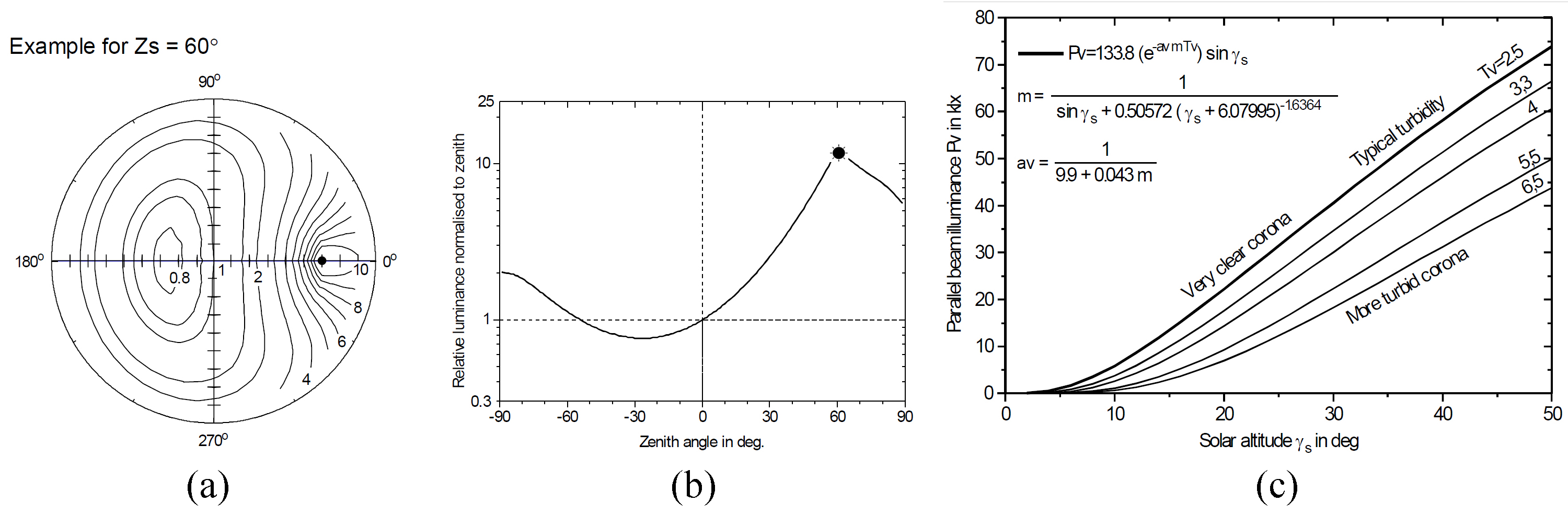 Figure 2
Figure 2 Figure 3
Figure 3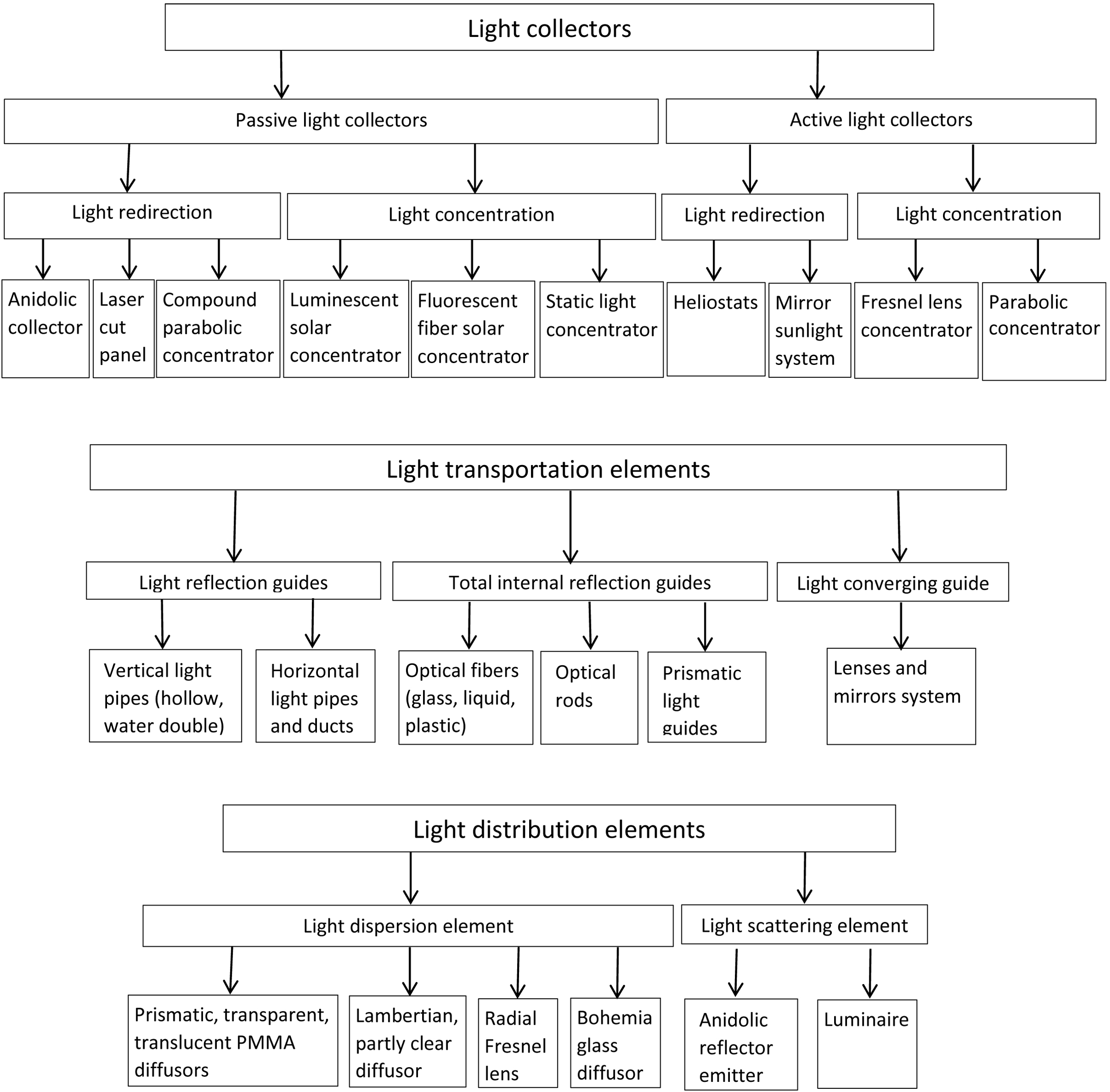 Figure 4
Figure 4 Figure 5
Figure 5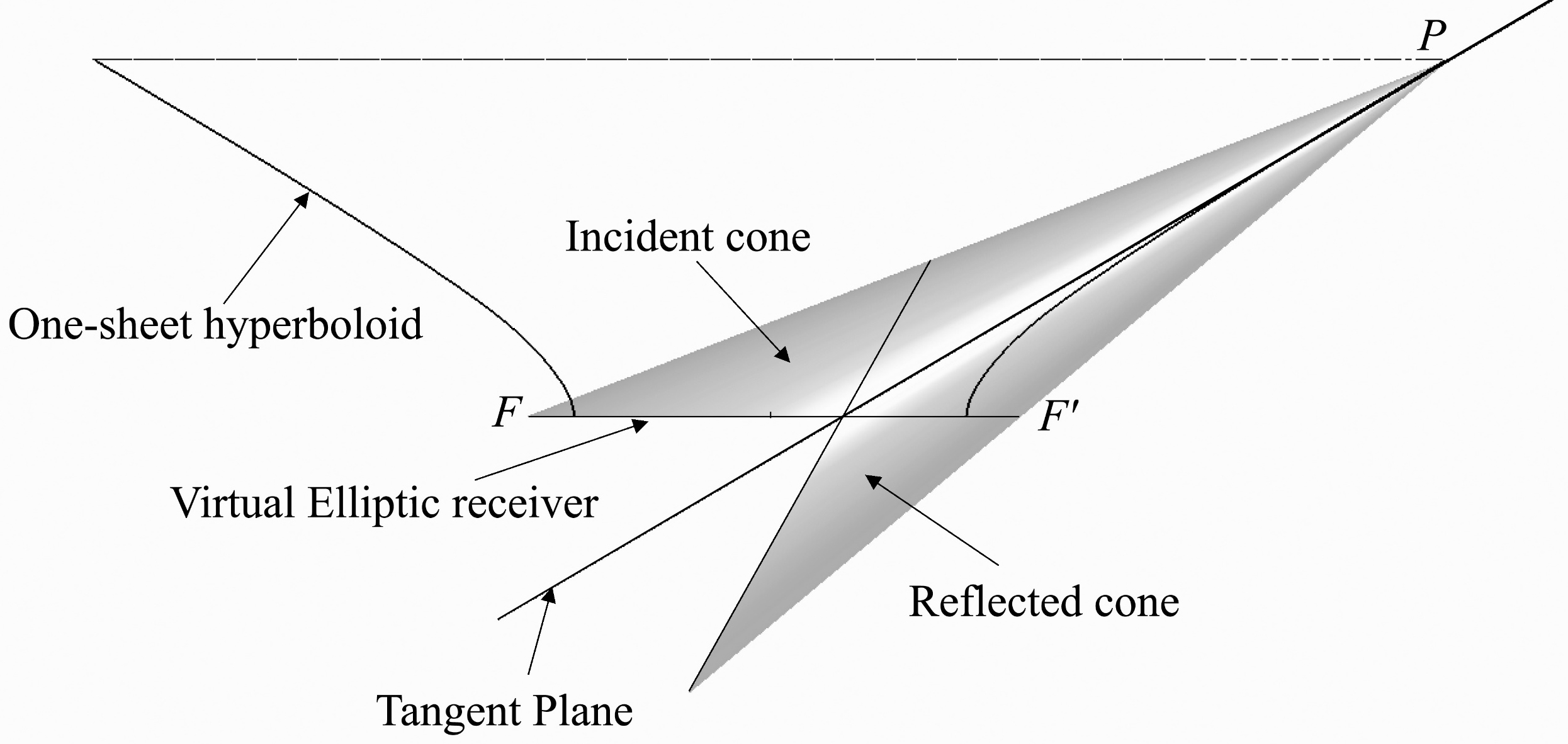 Figure 6
Figure 6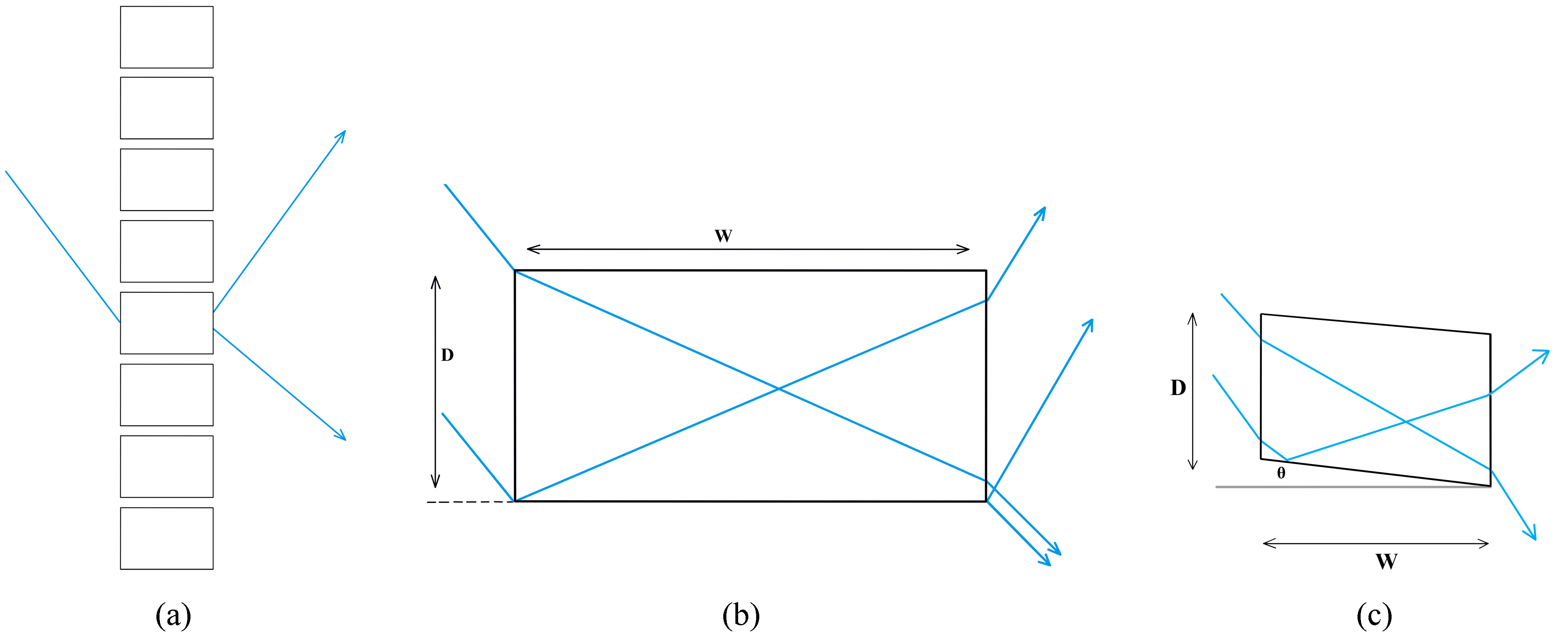 Figure 7
Figure 7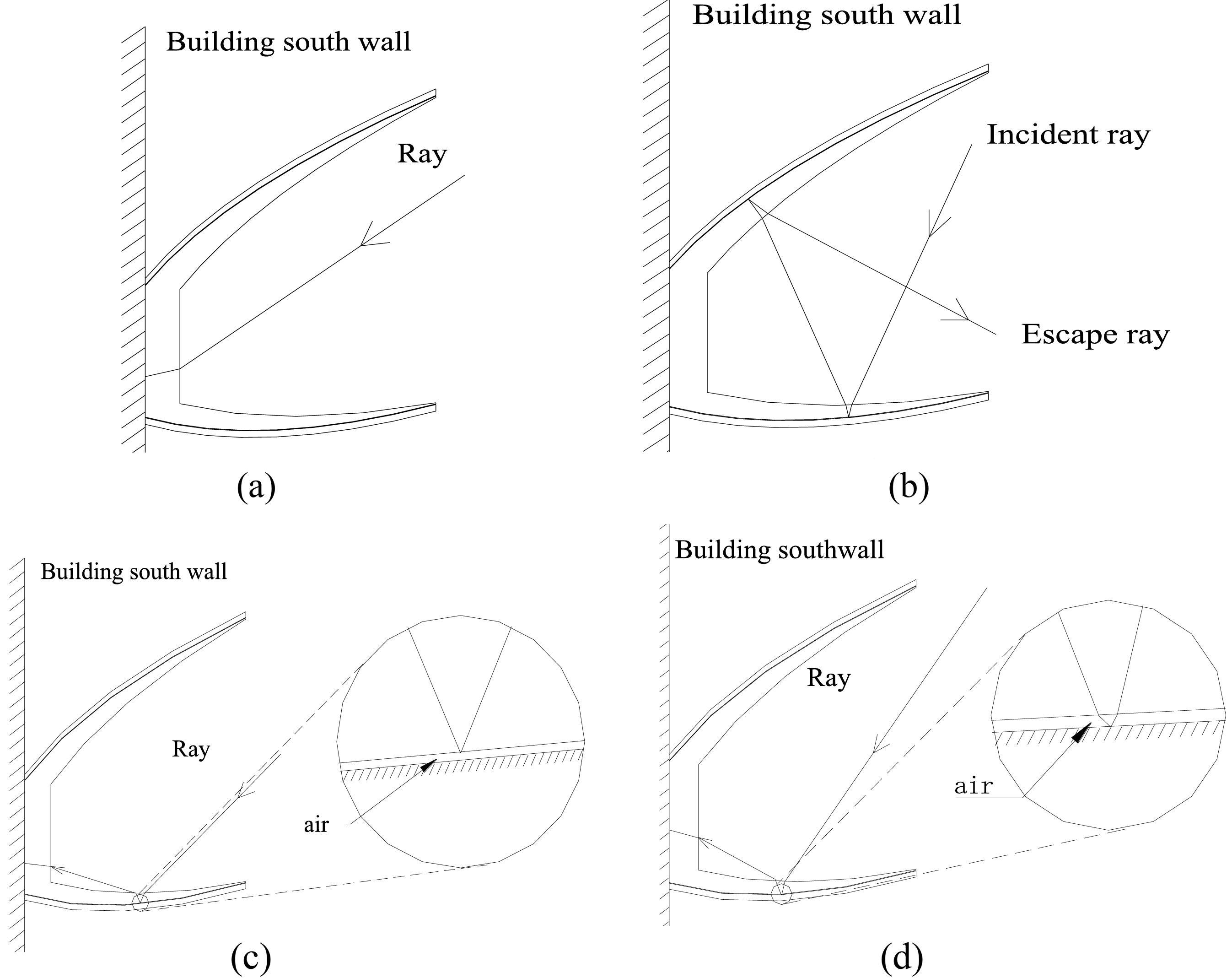 Figure 8
Figure 8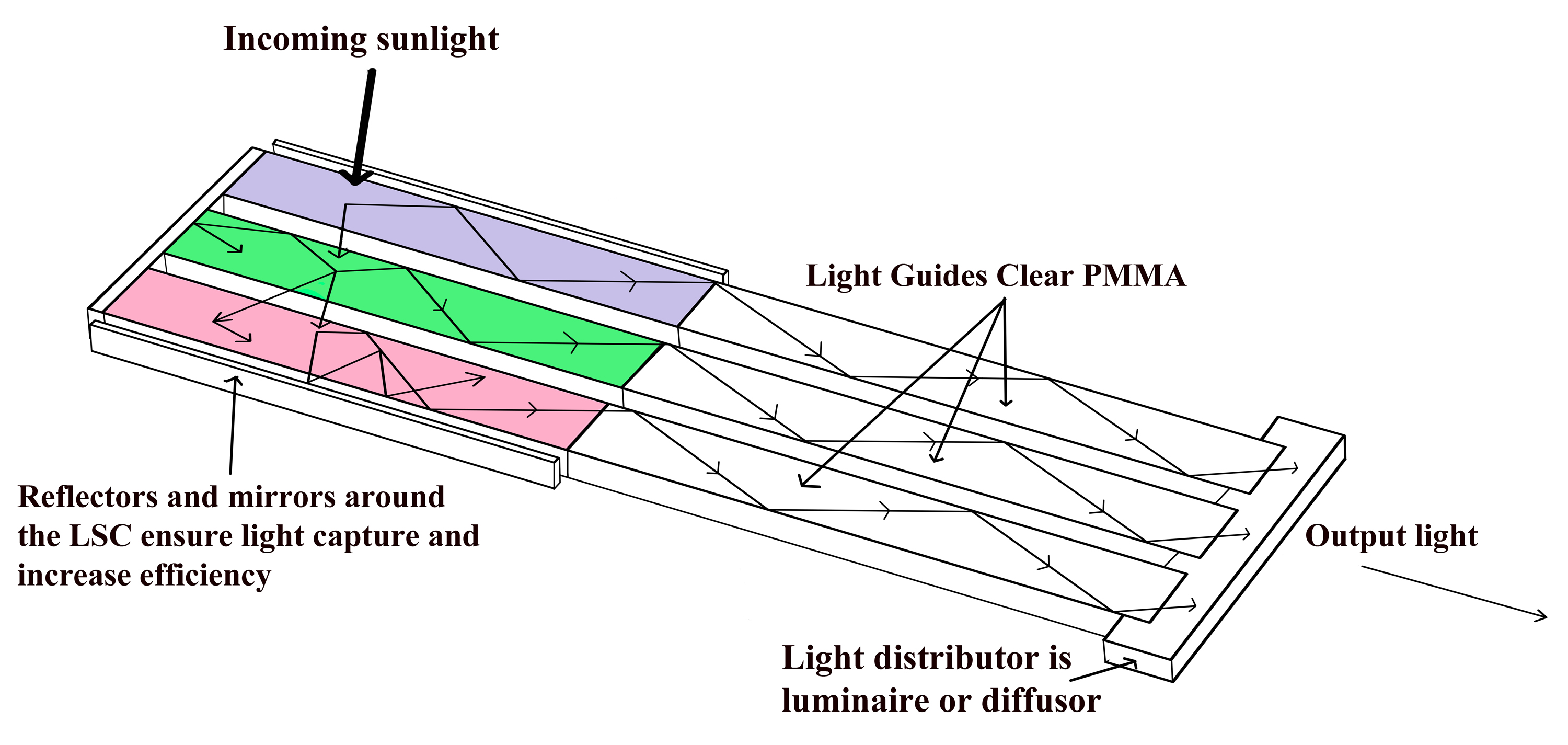 Figure 9
Figure 9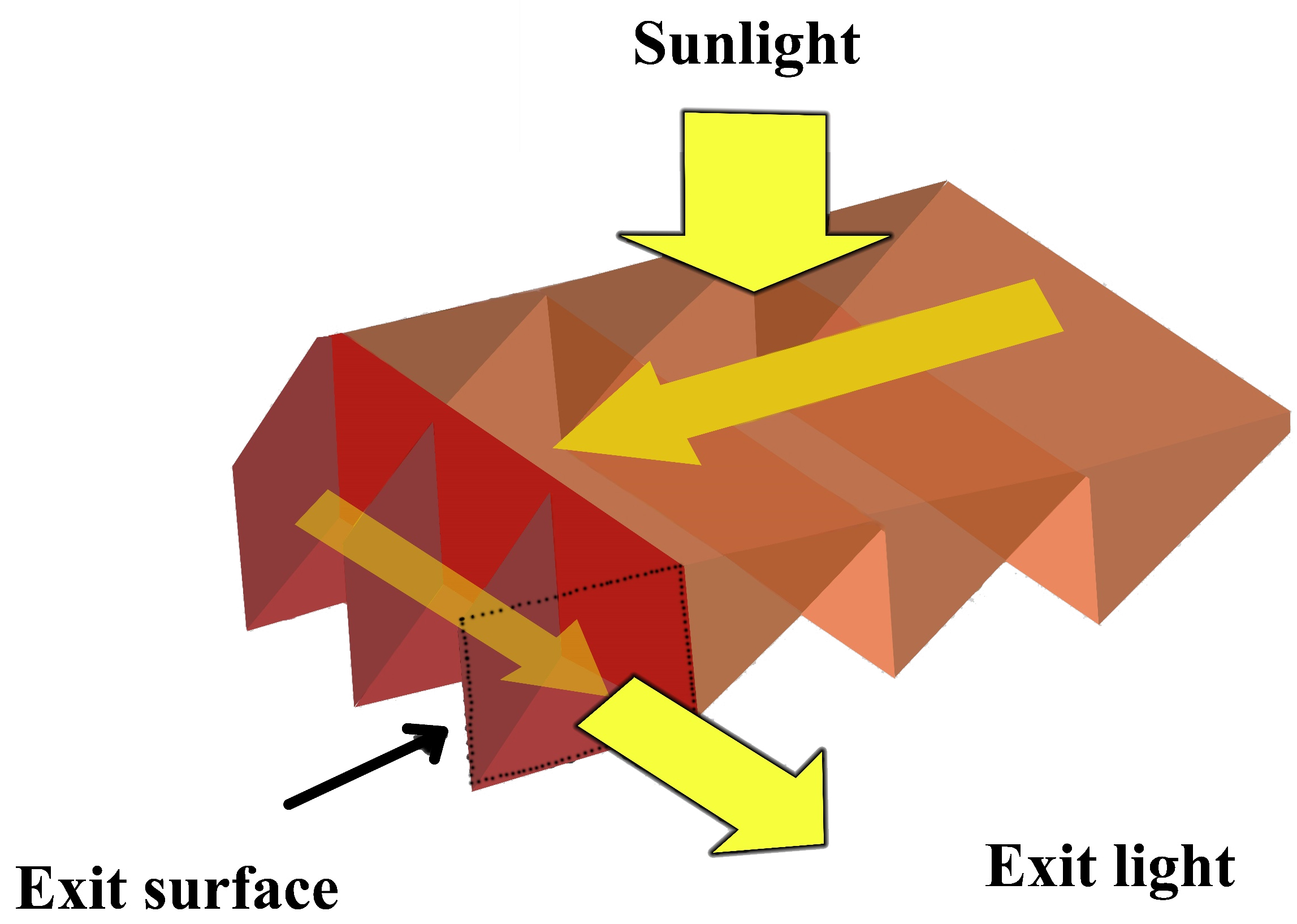 Figure 10
Figure 10 Figure 11
Figure 11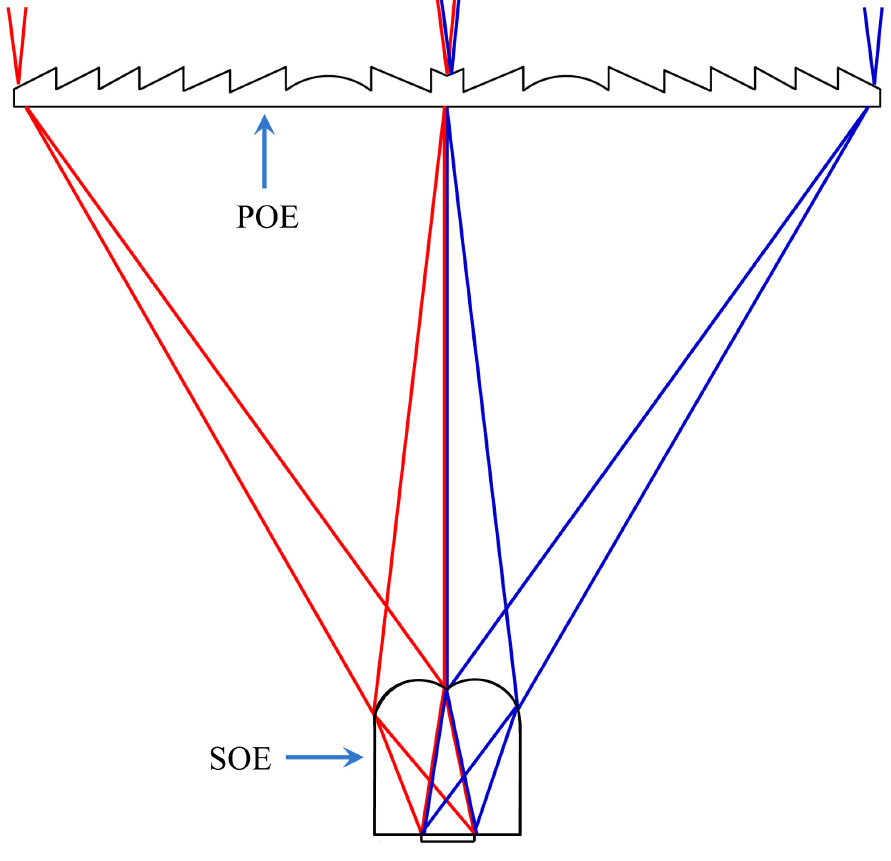 Figure 12
Figure 12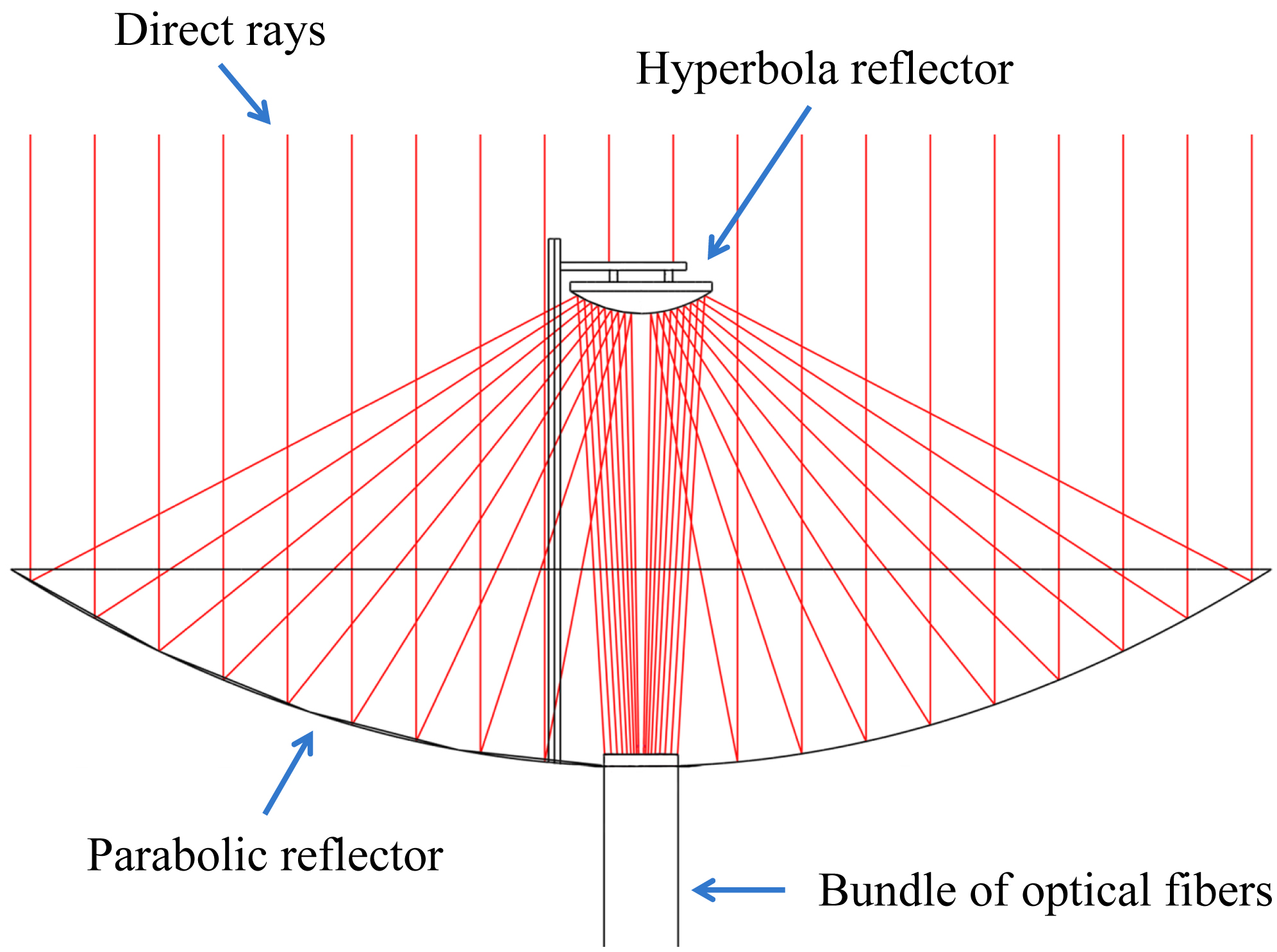 Figure 13
Figure 13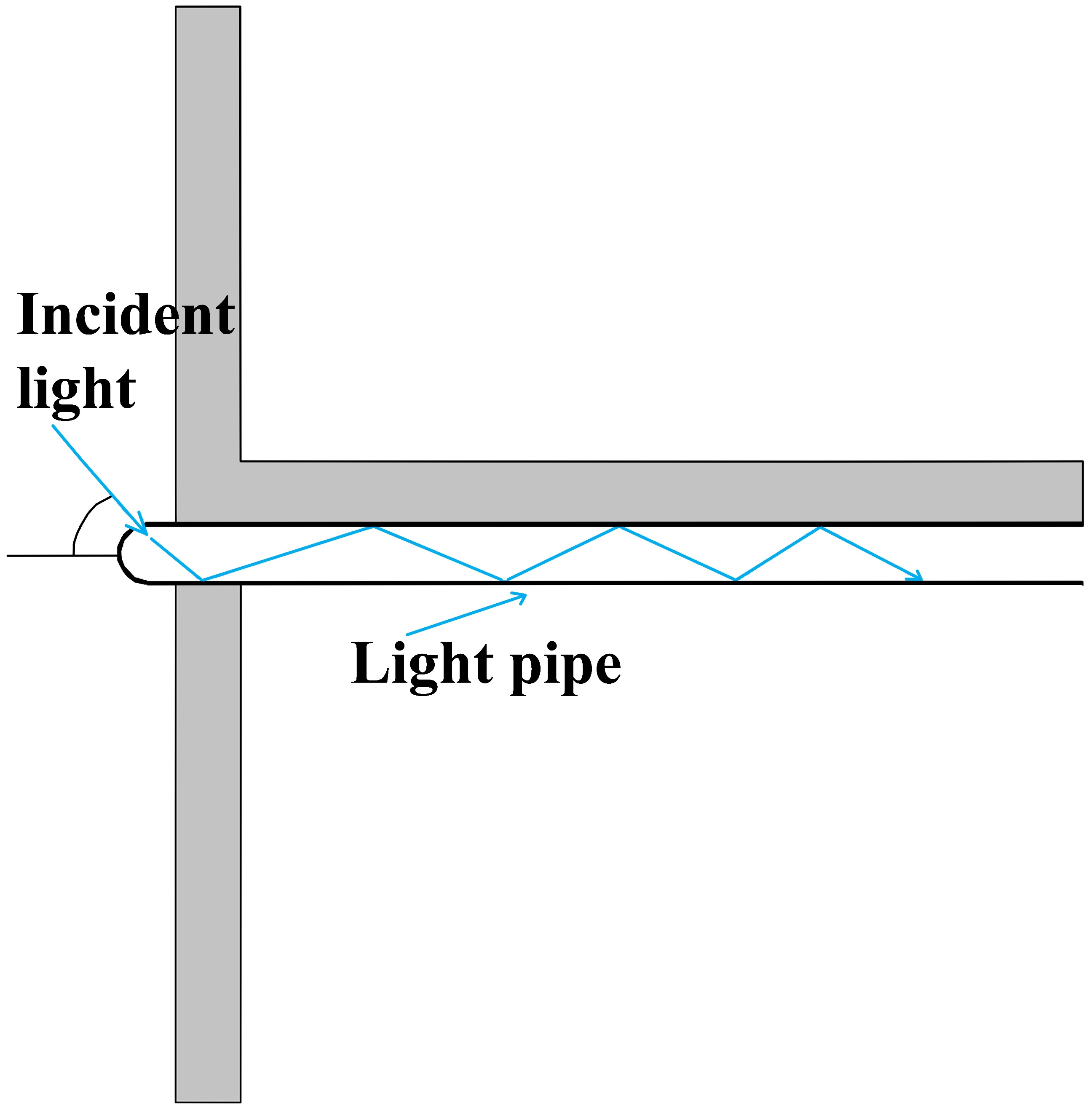 Figure 14
Figure 14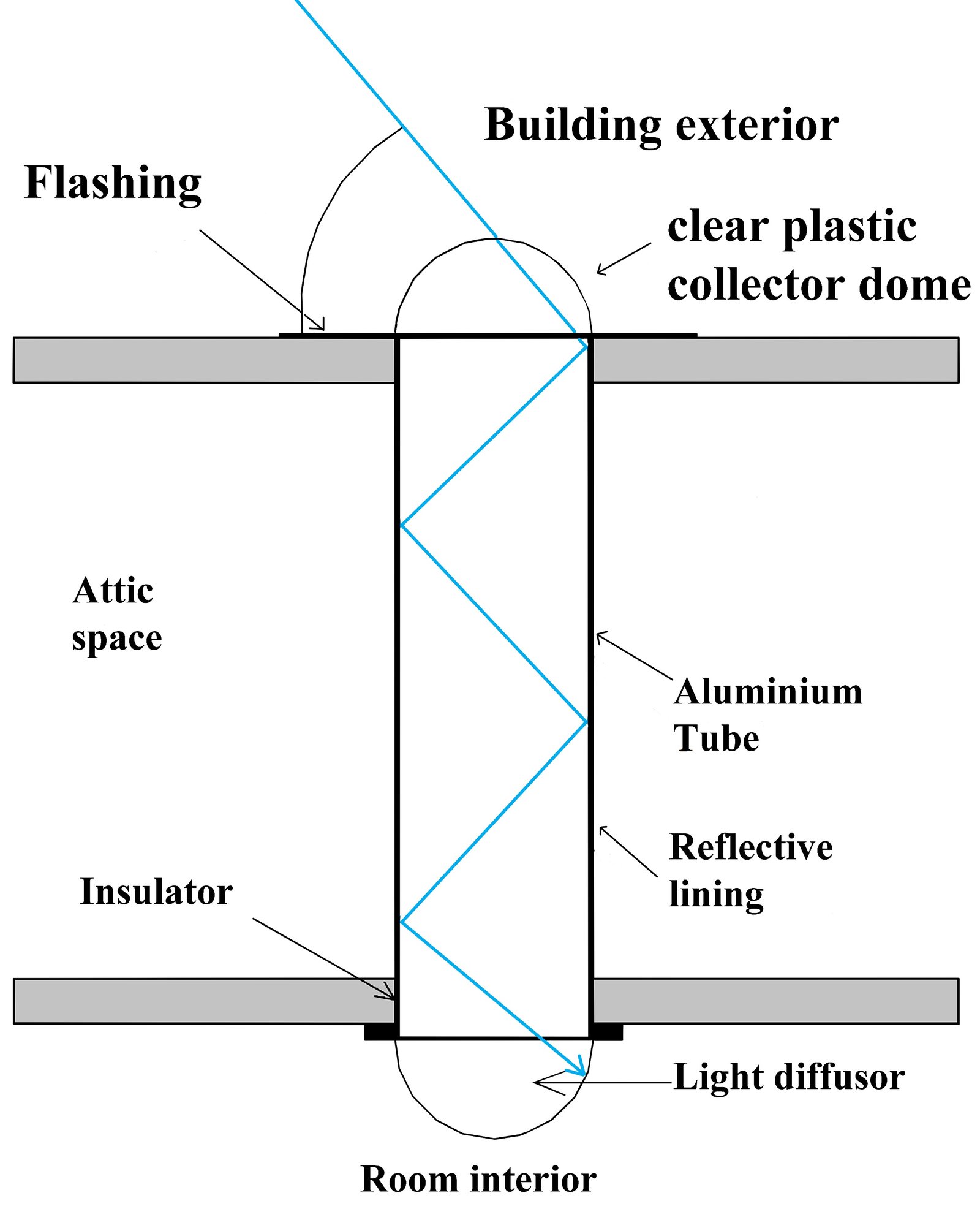 Figure 15
Figure 15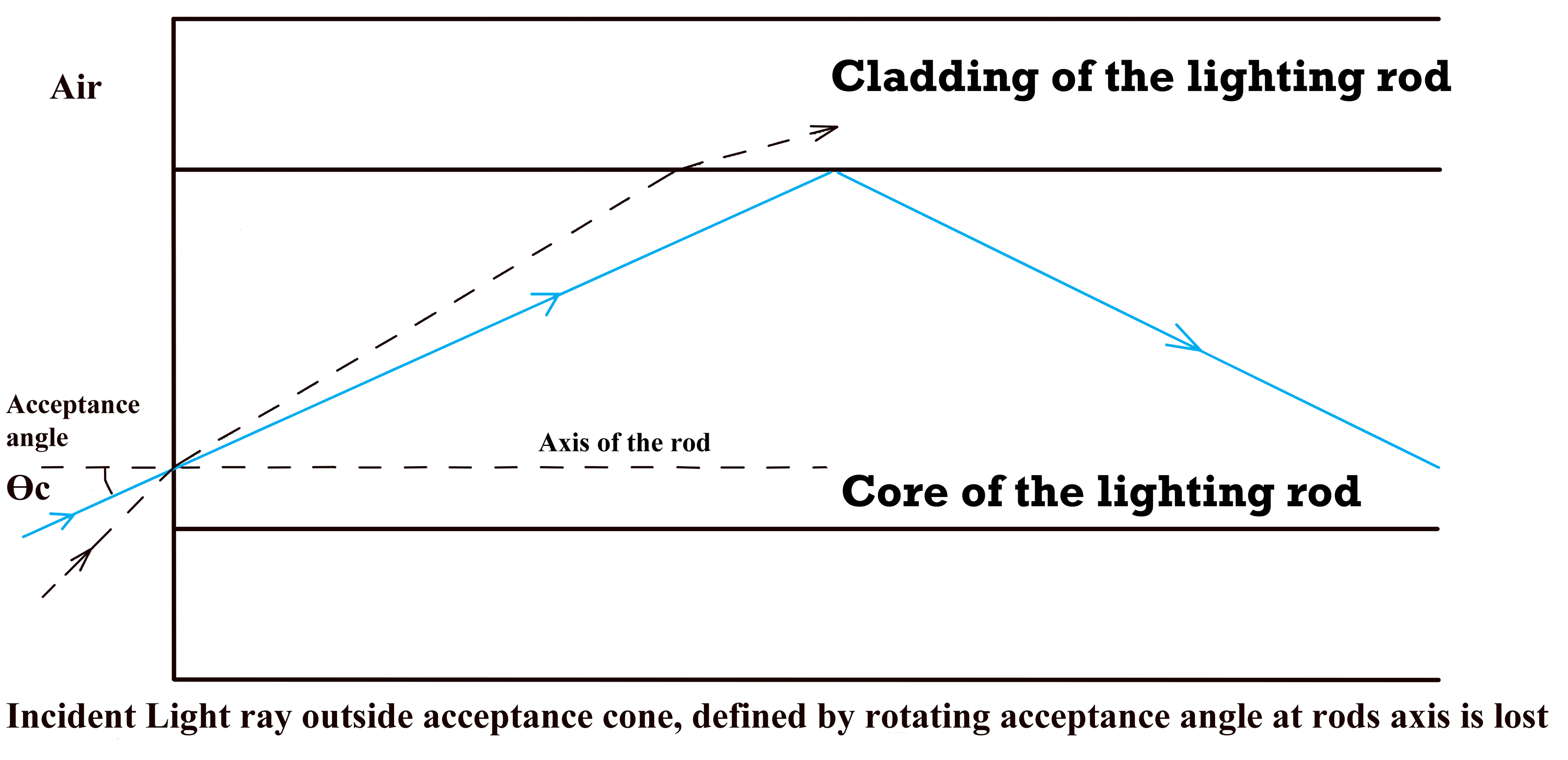 Figure 16
Figure 16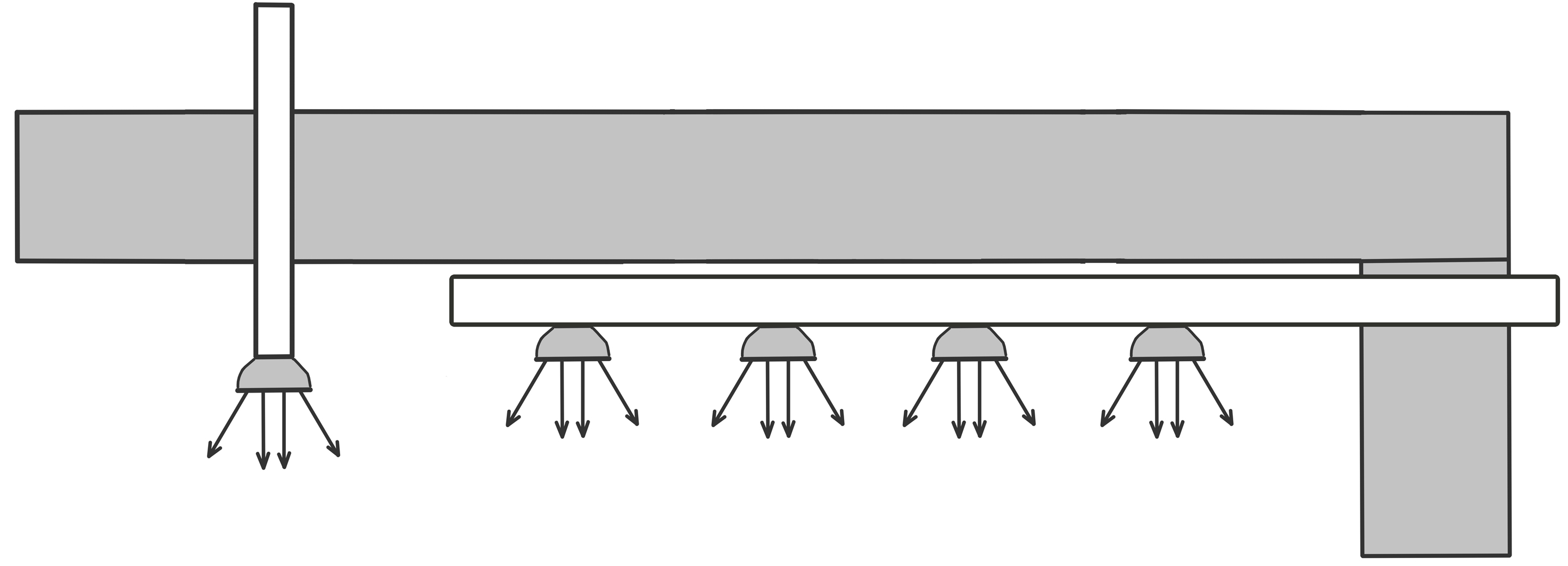 Figure 17
Figure 17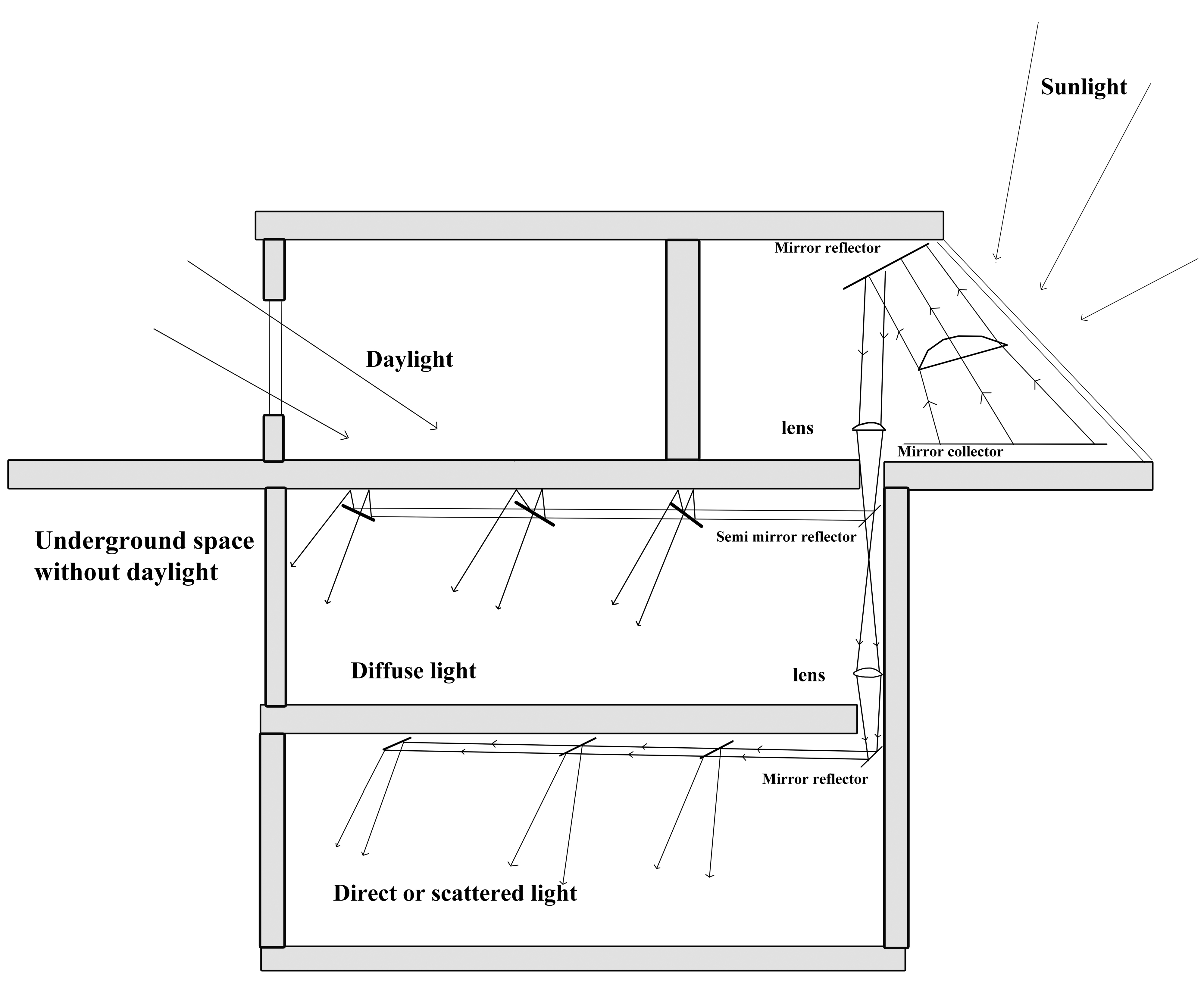 Figure 18
Figure 18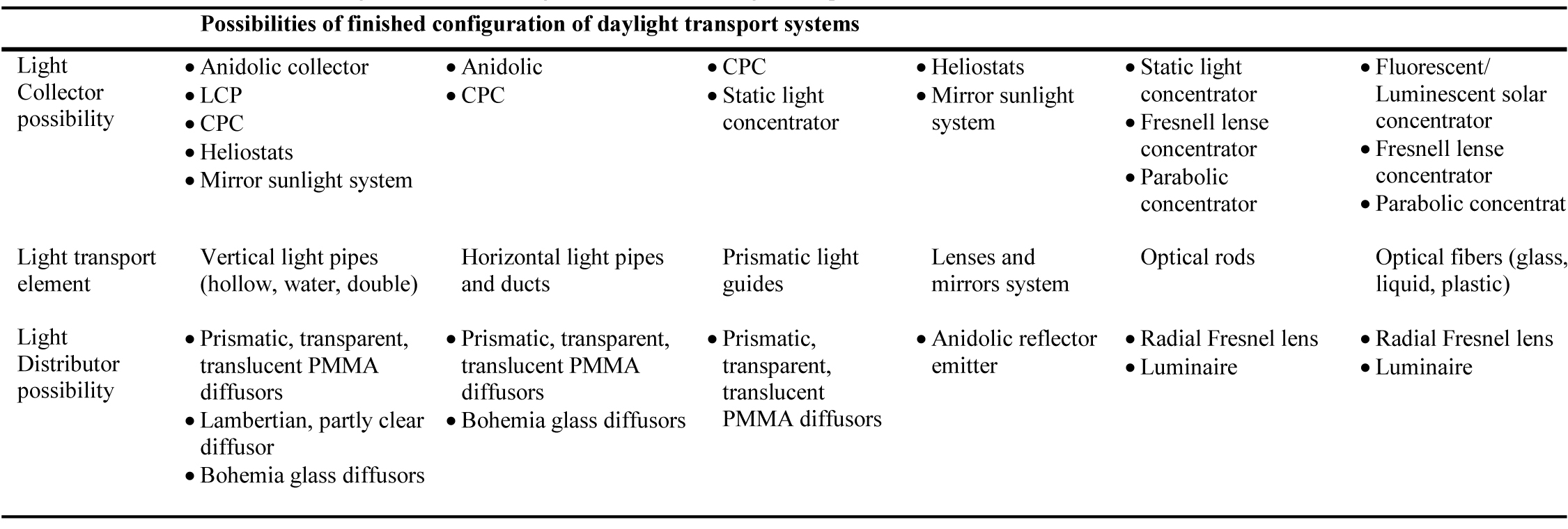 Table 1
Table 1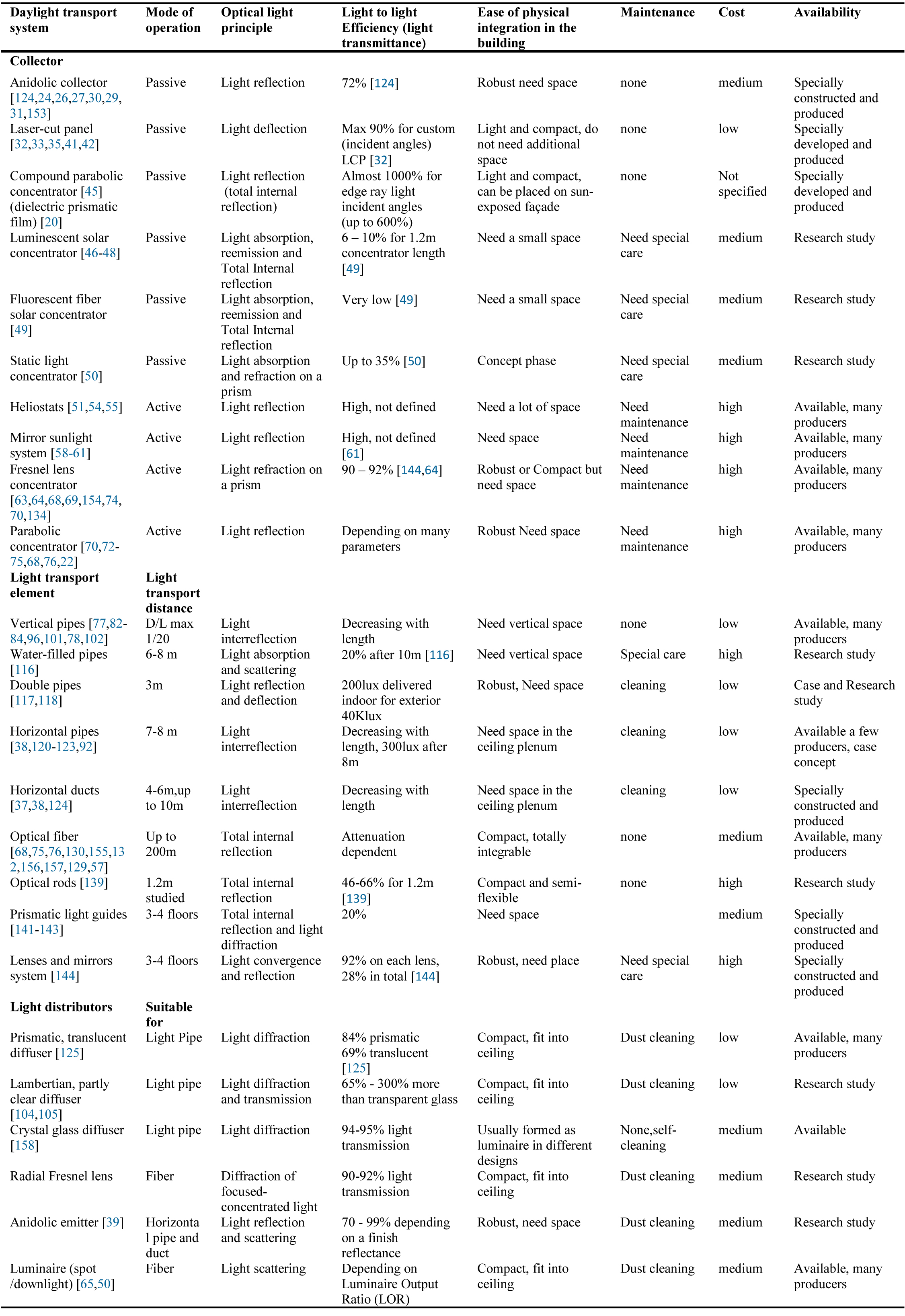 Table 2
Table 2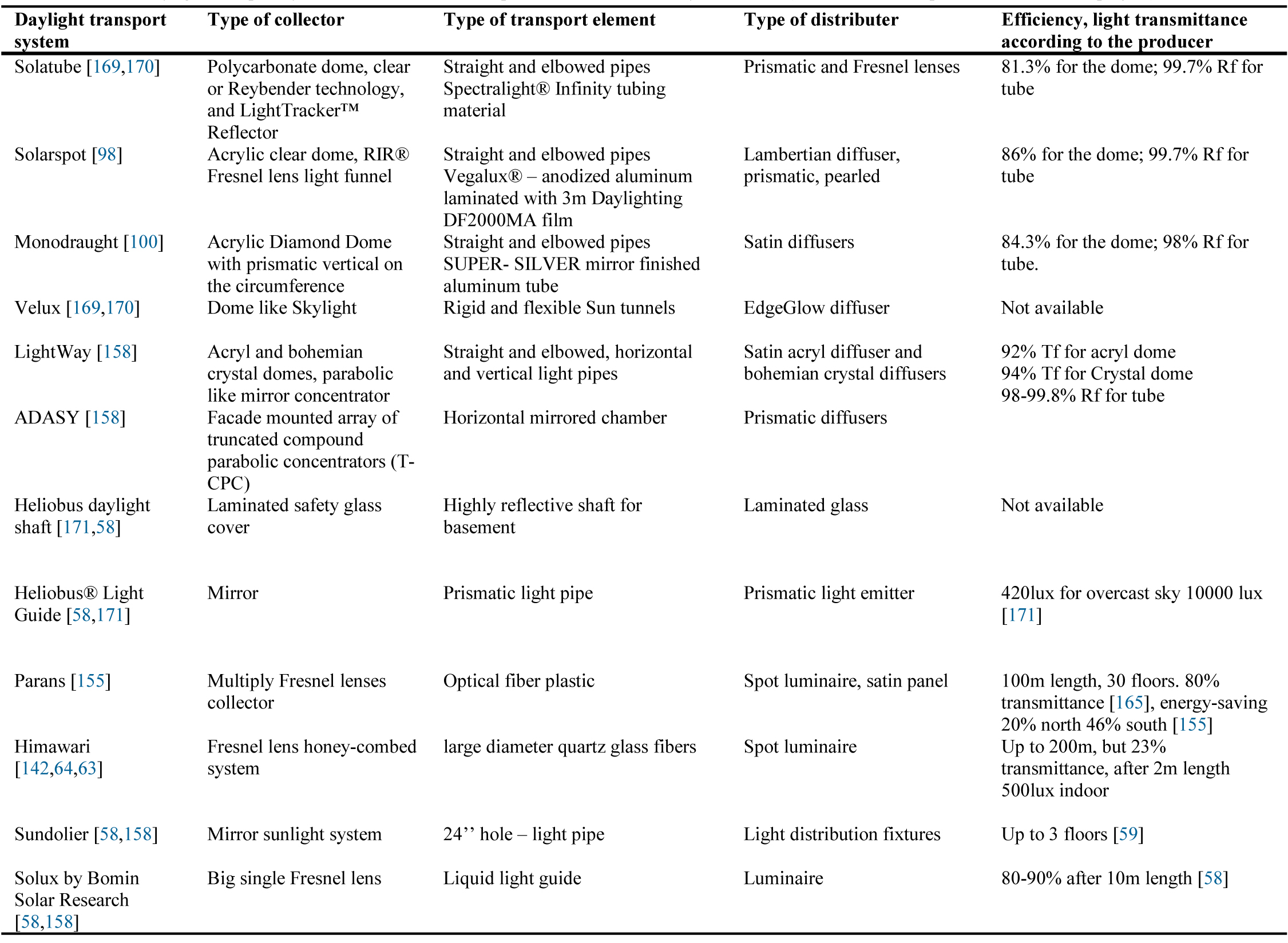 Table 3
Table 3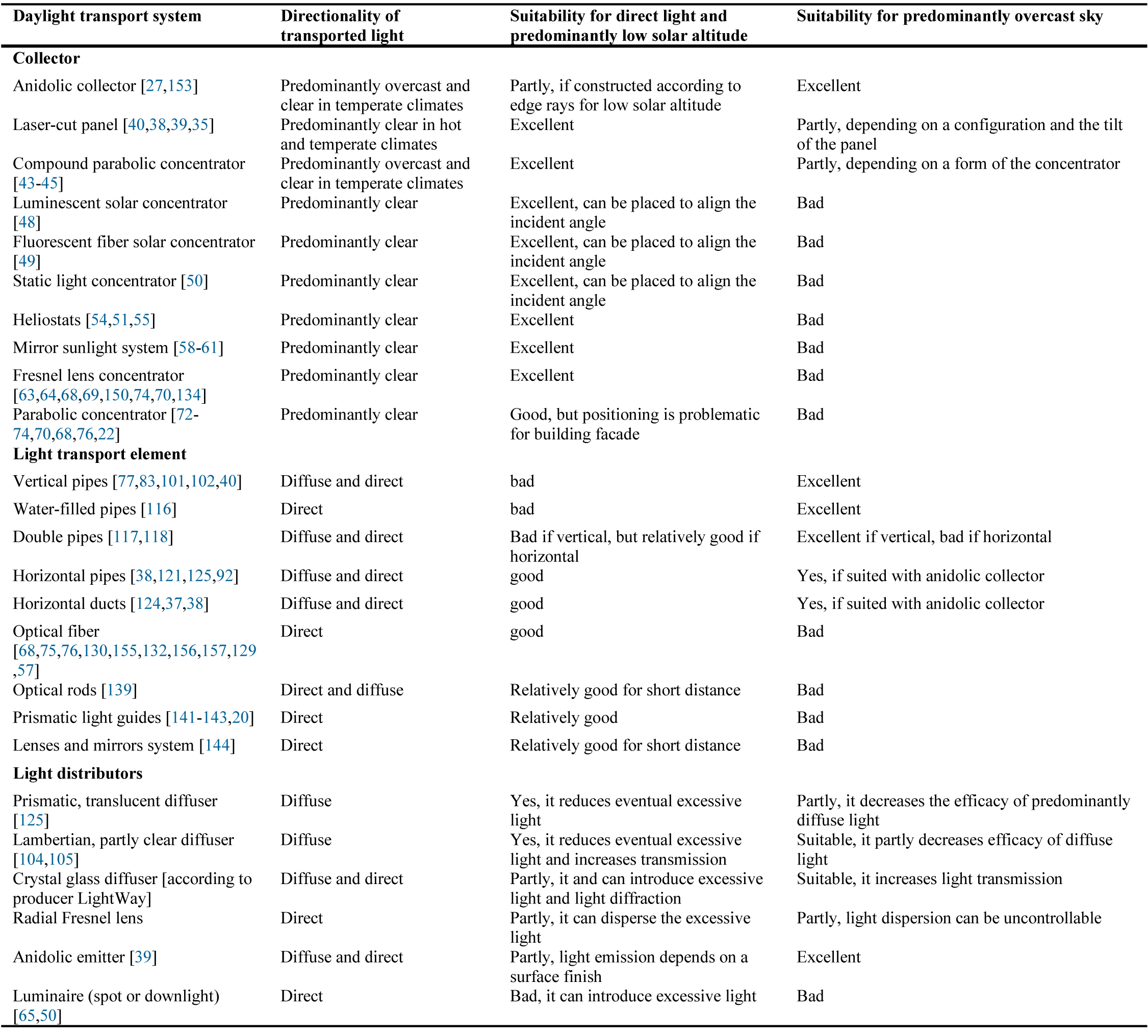 Table 4
Table 4


